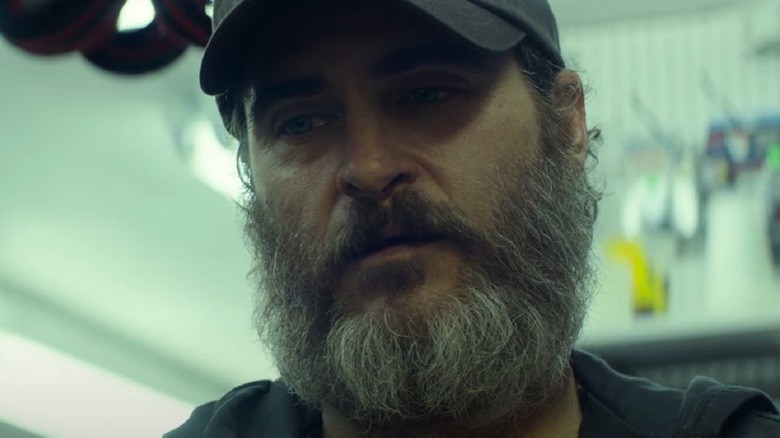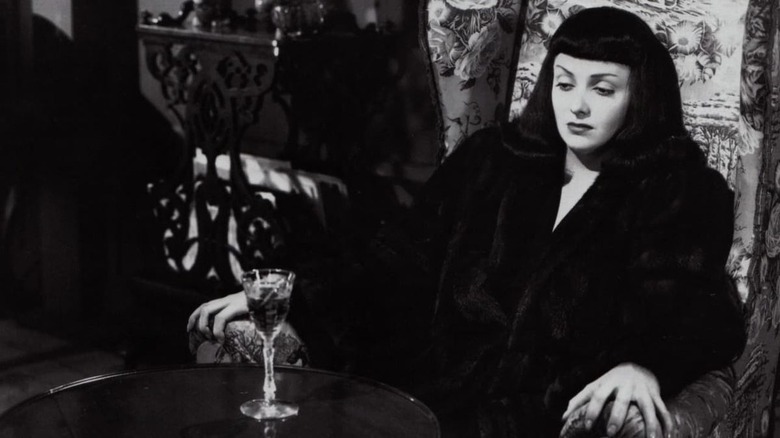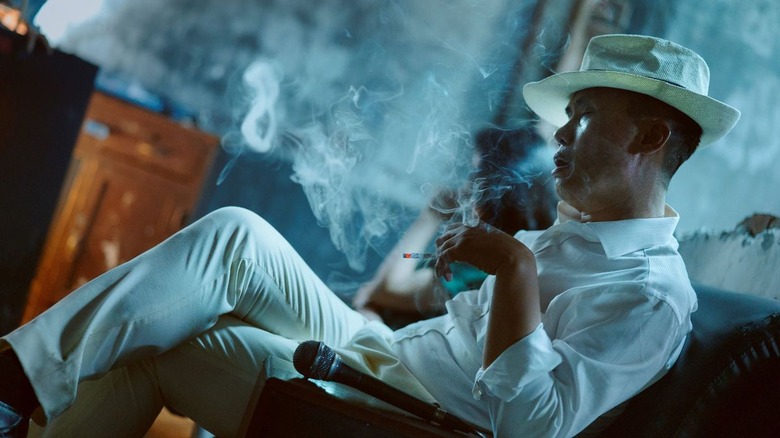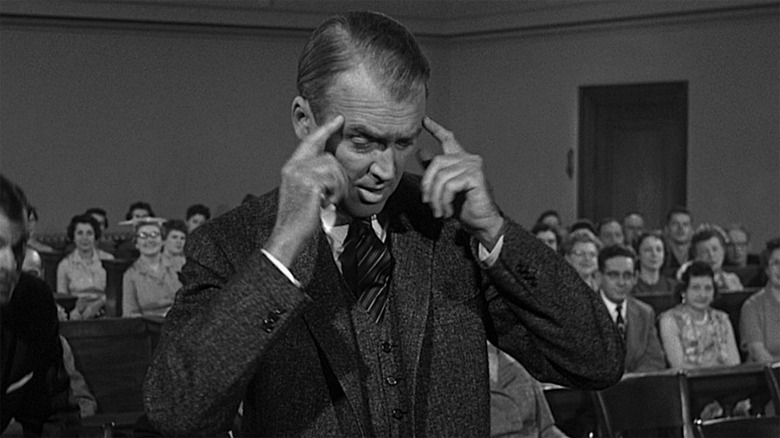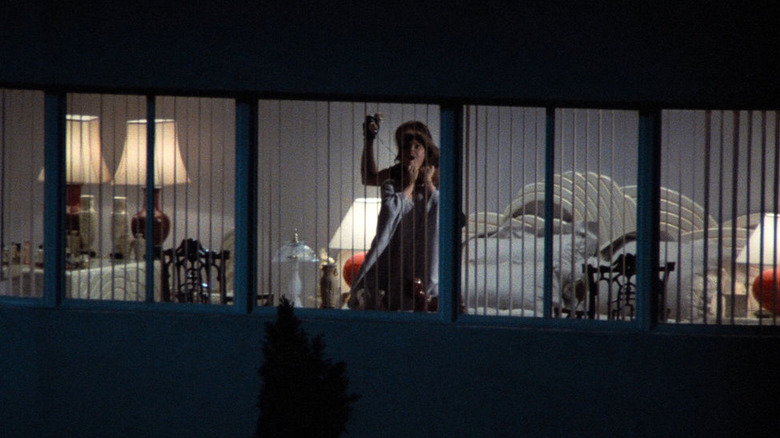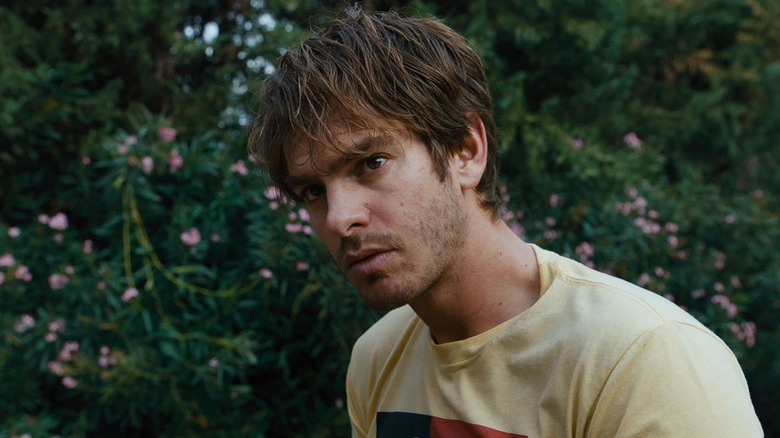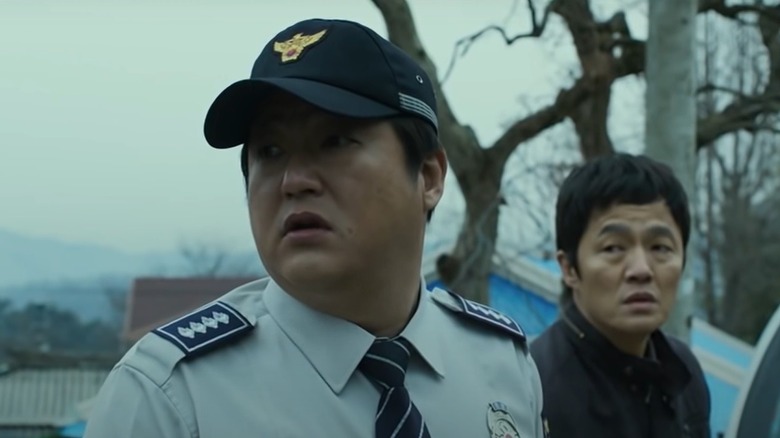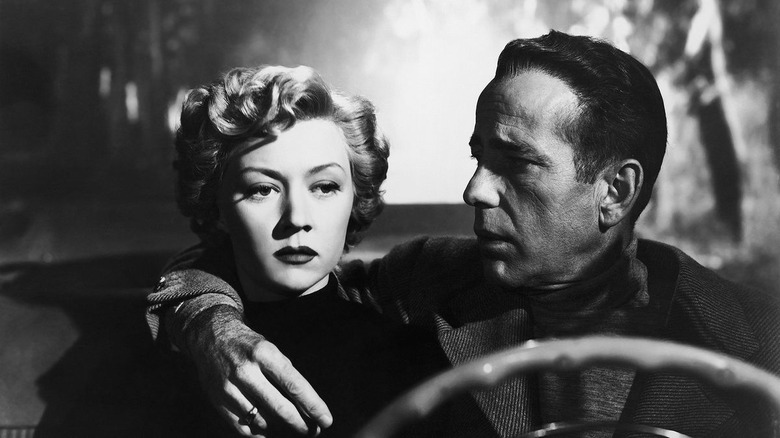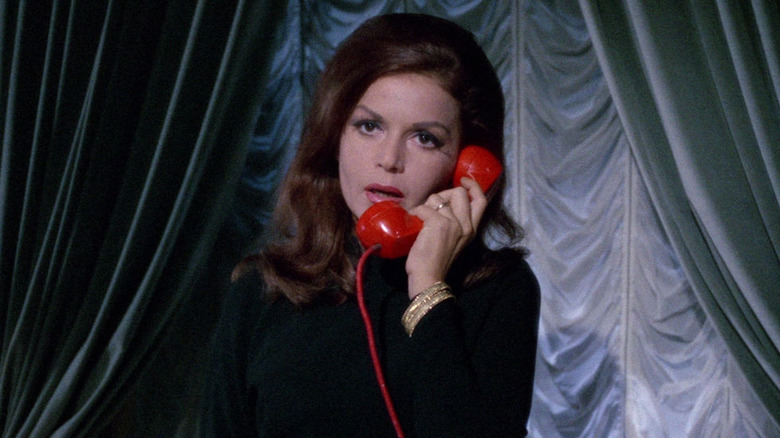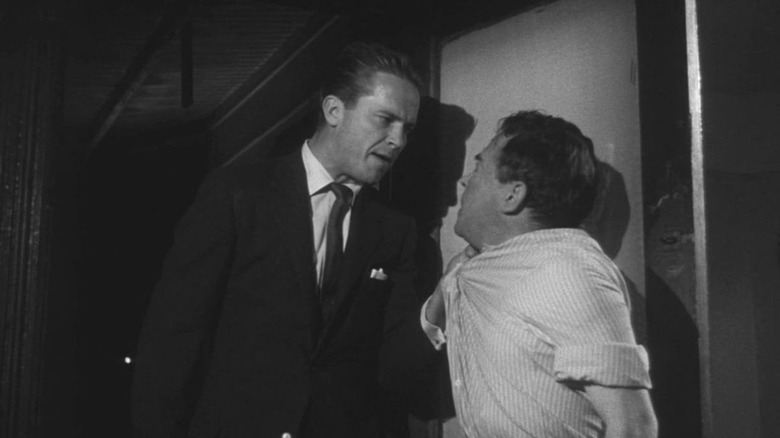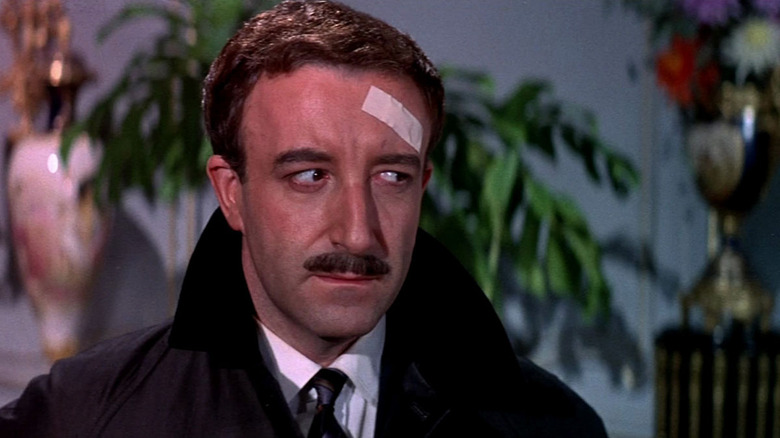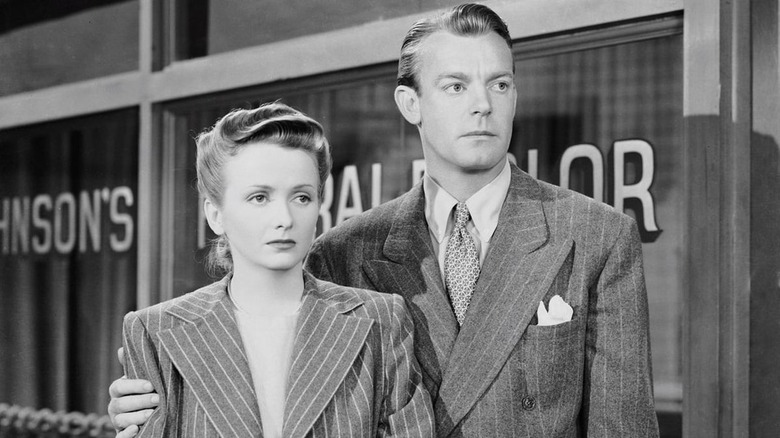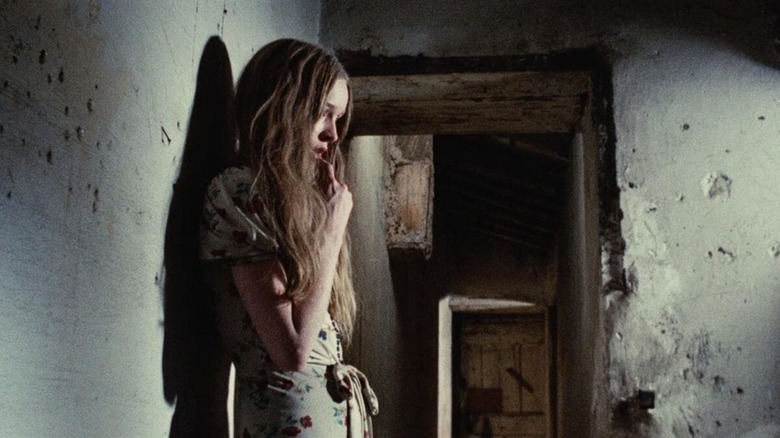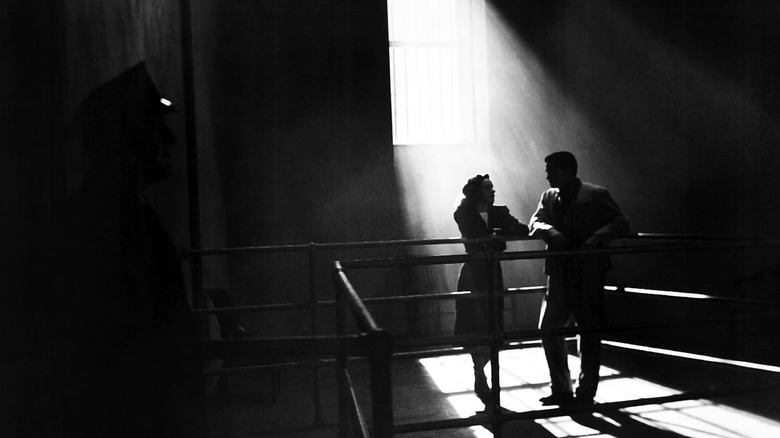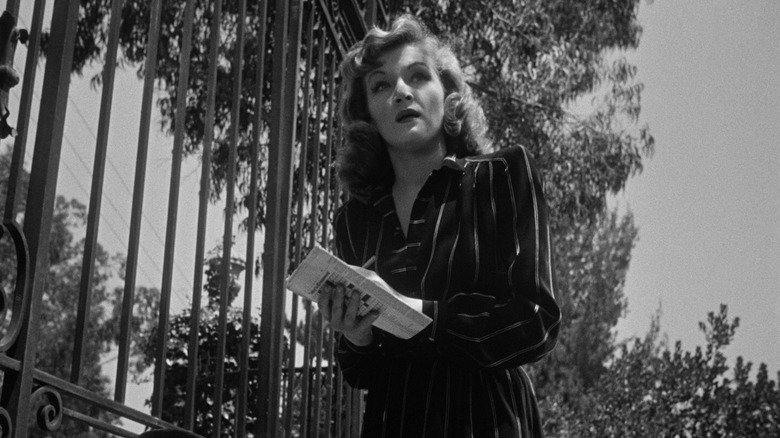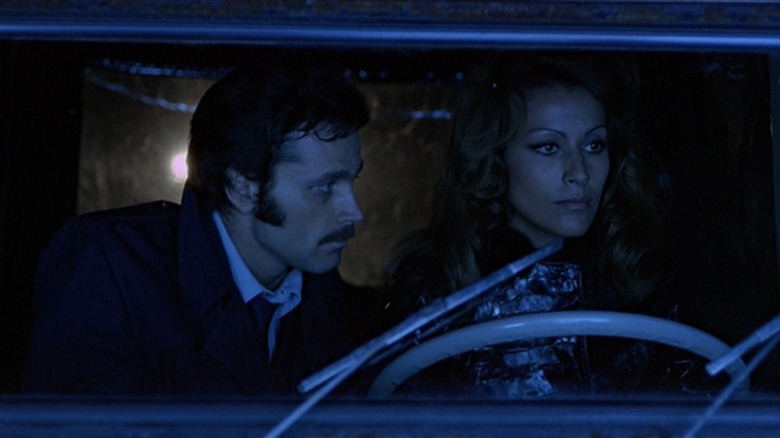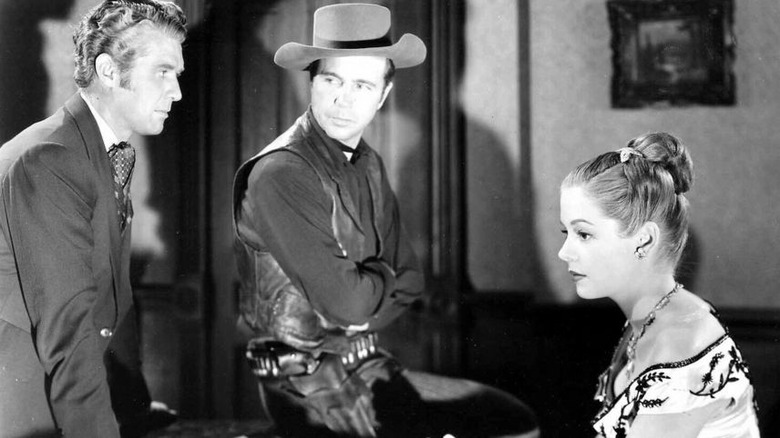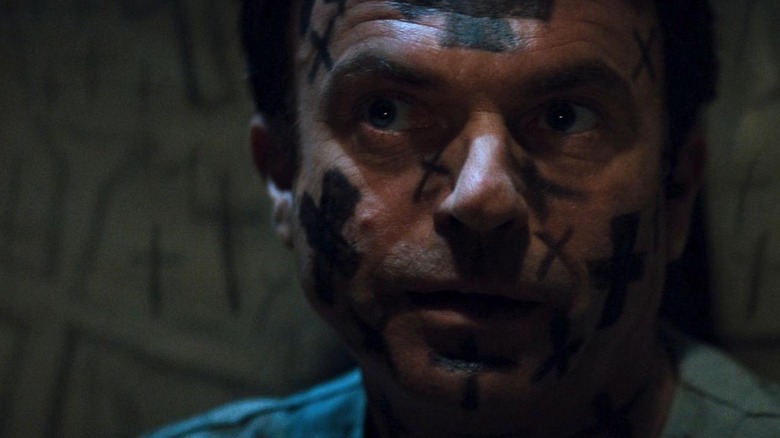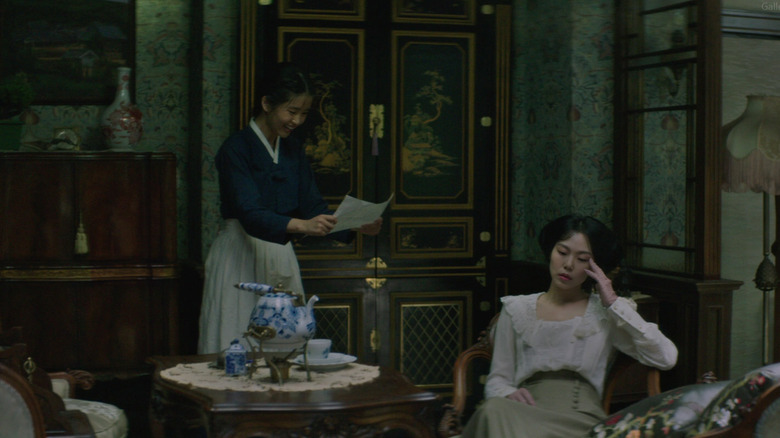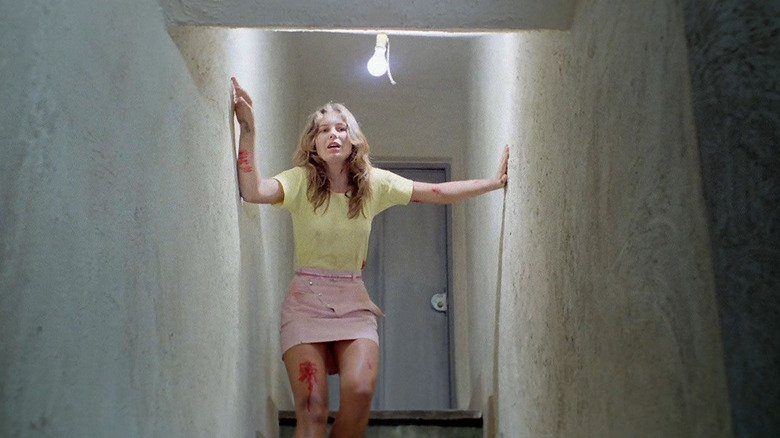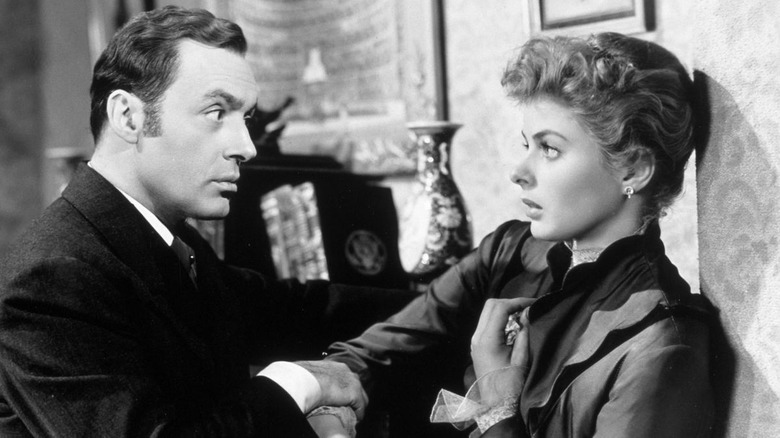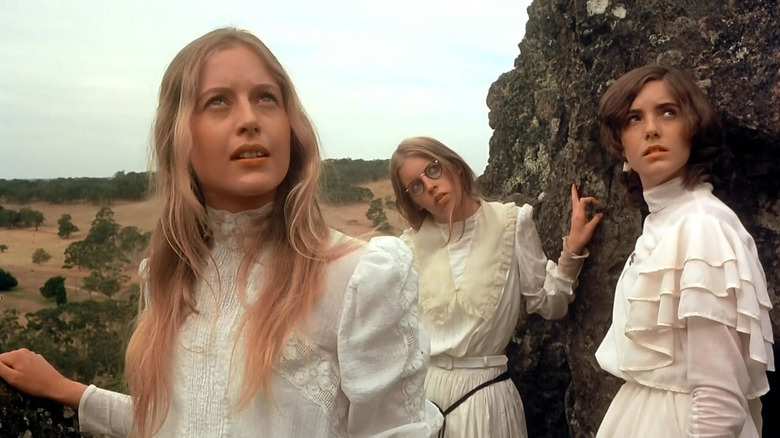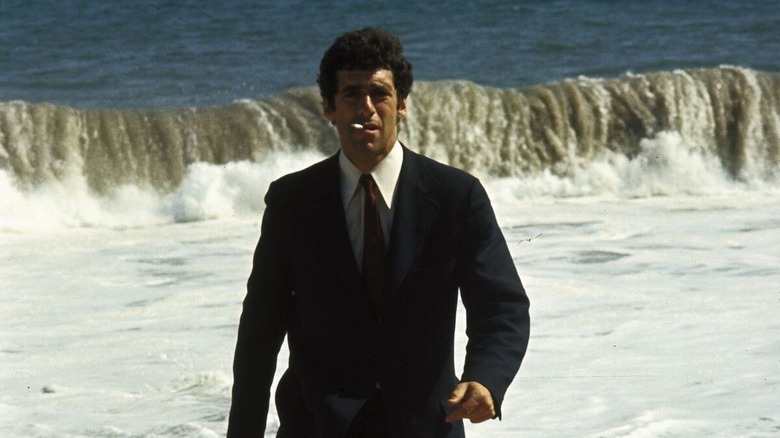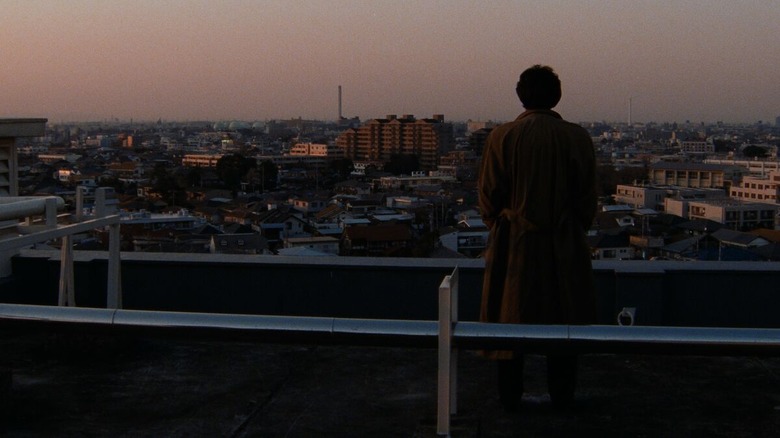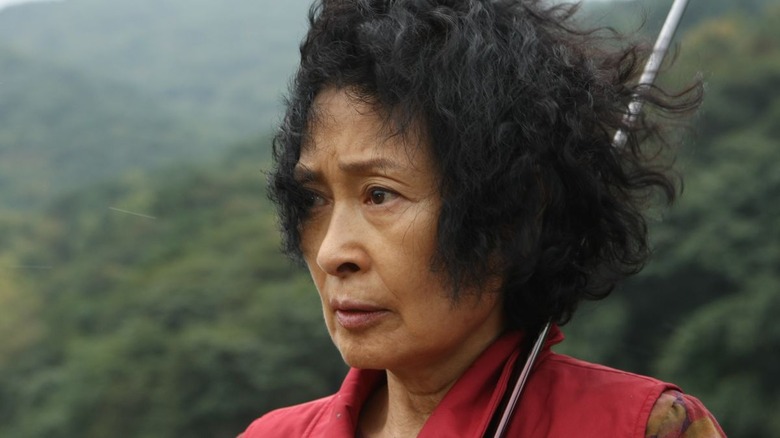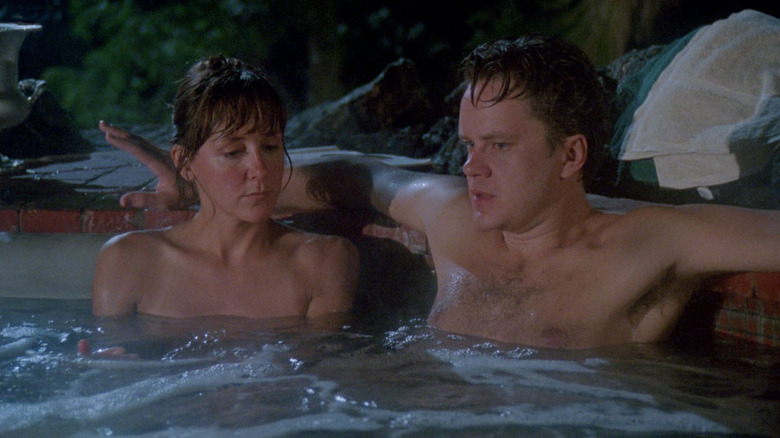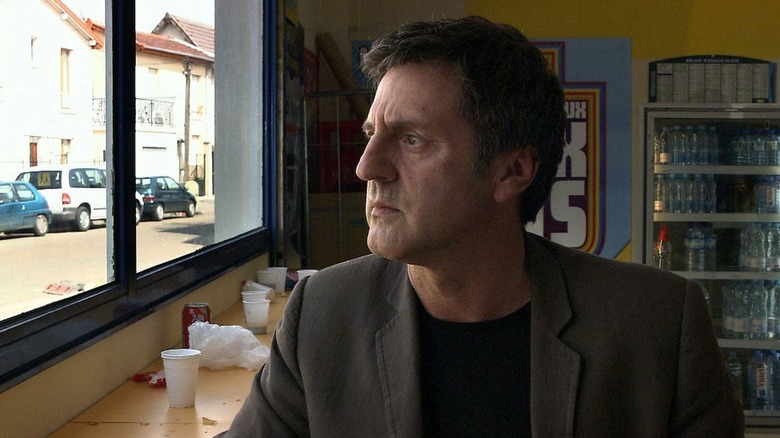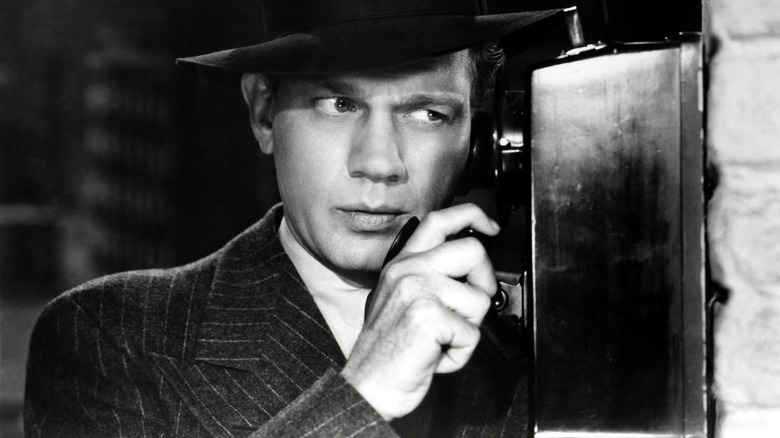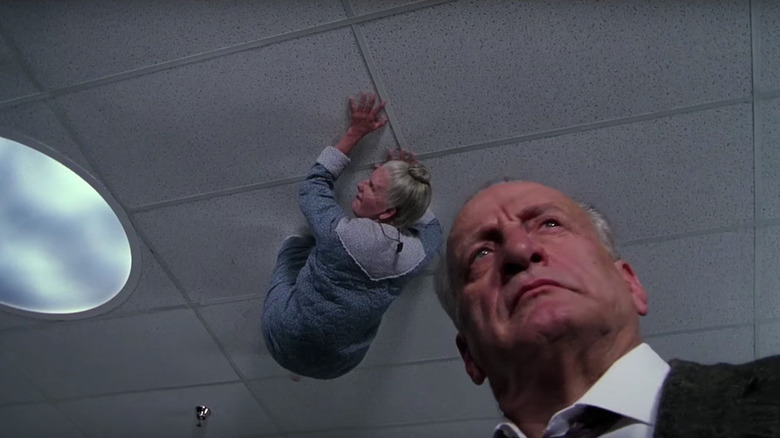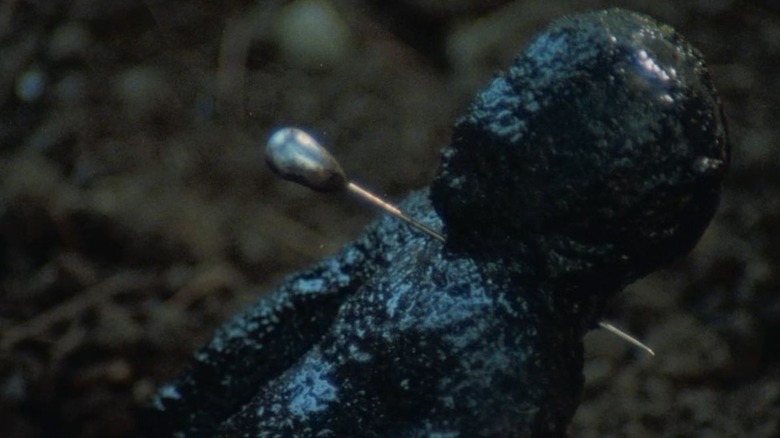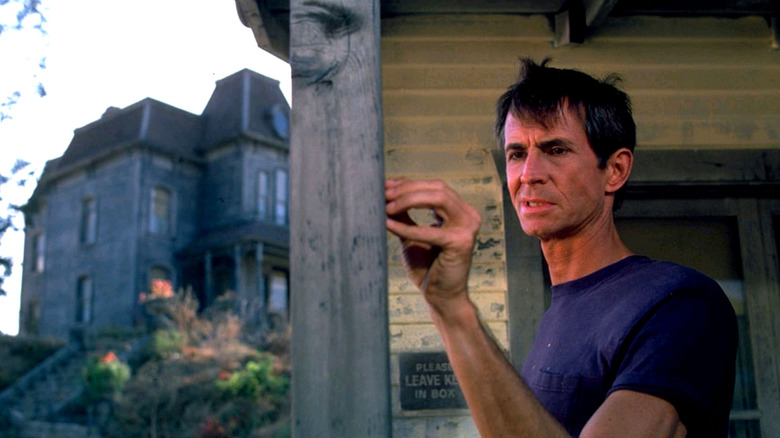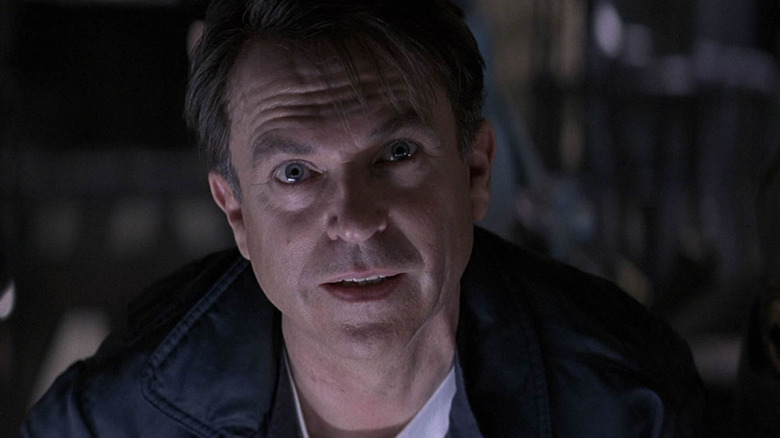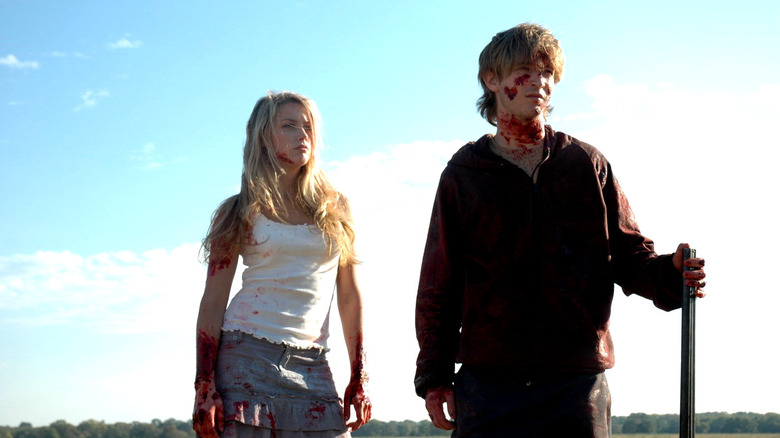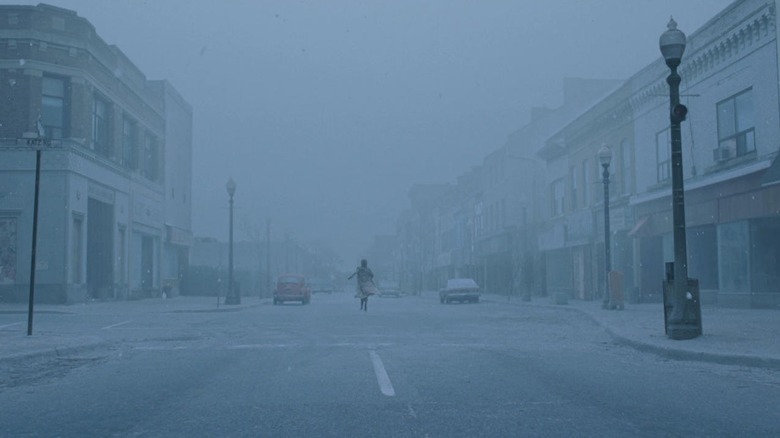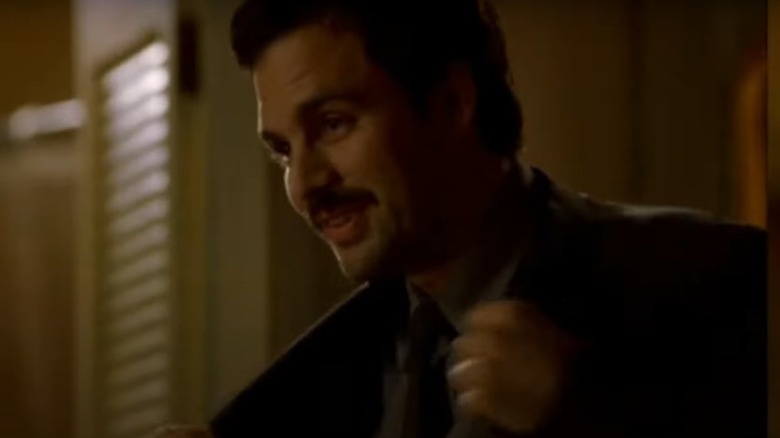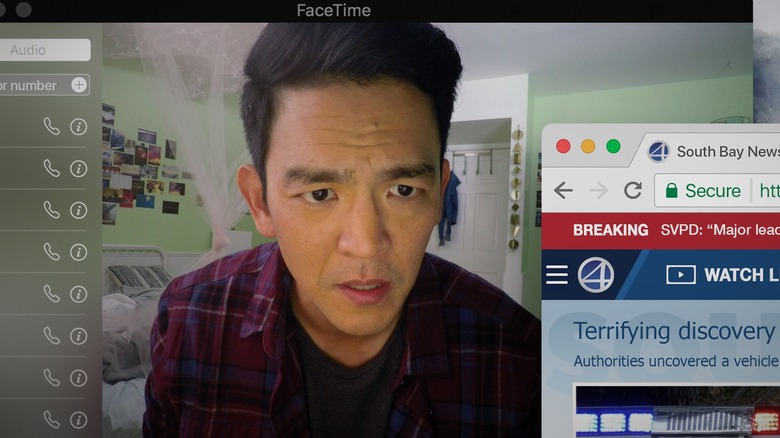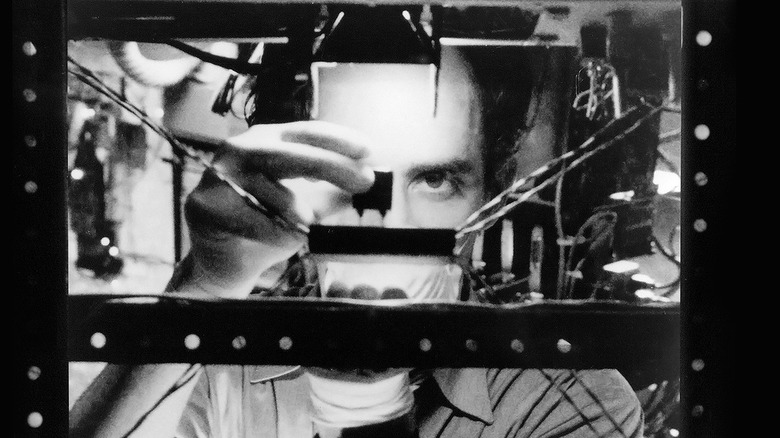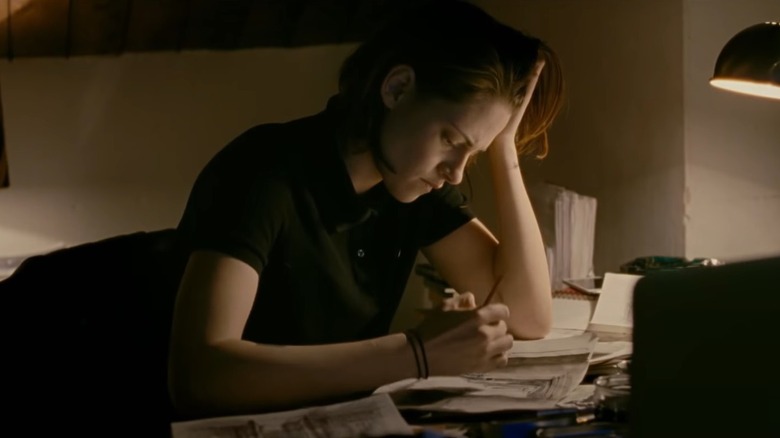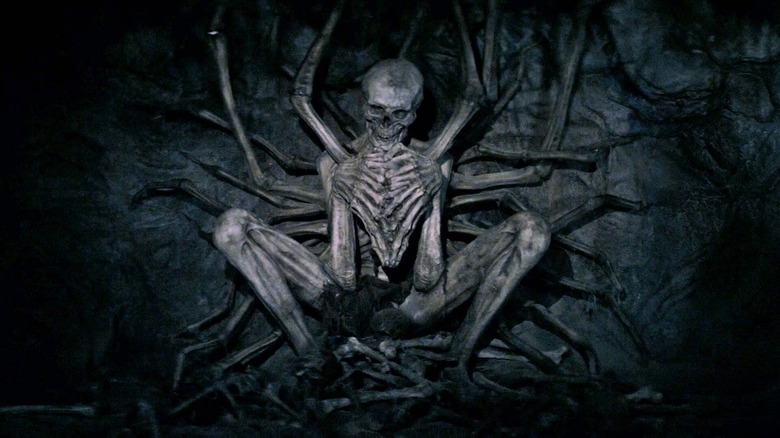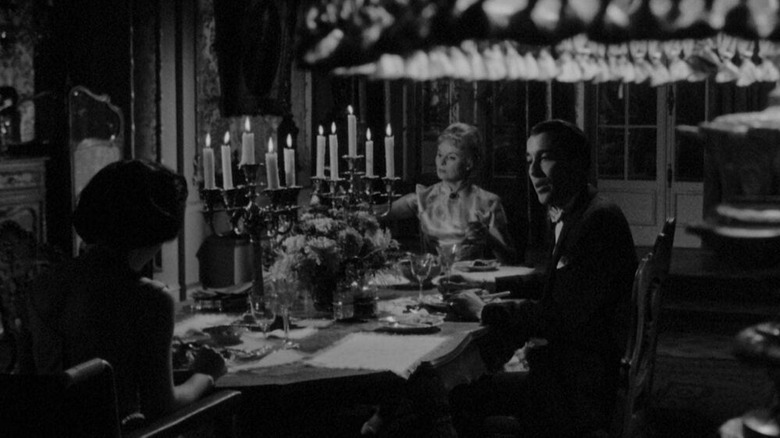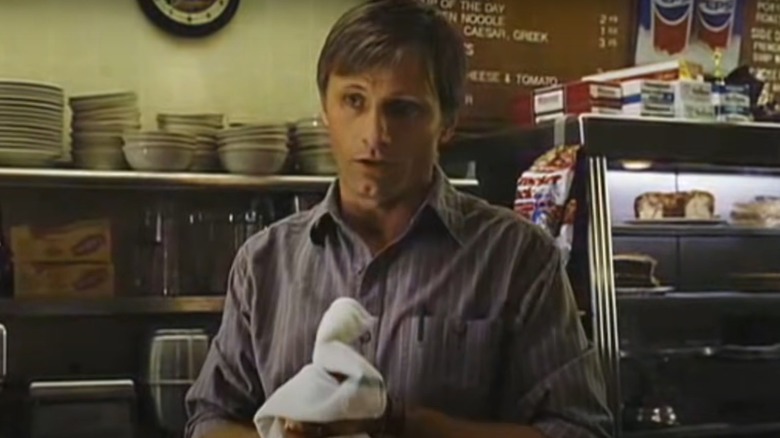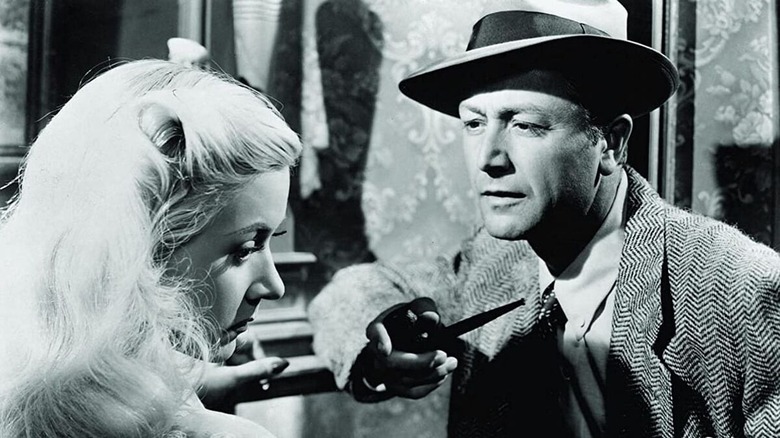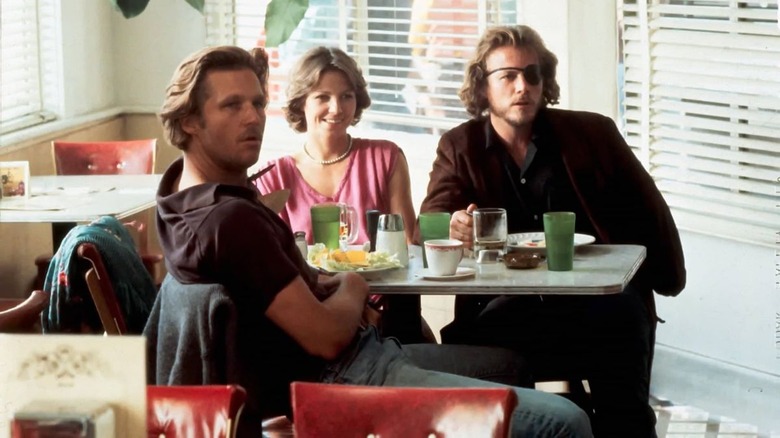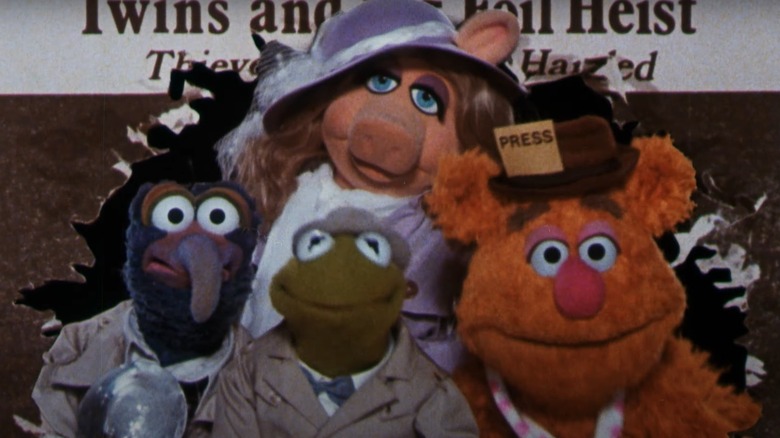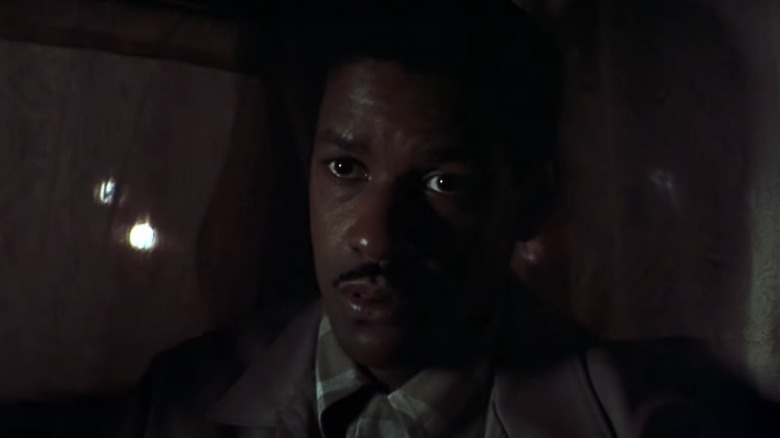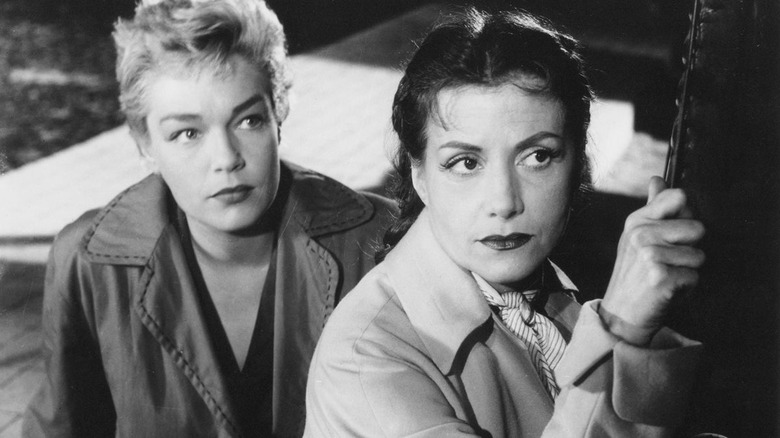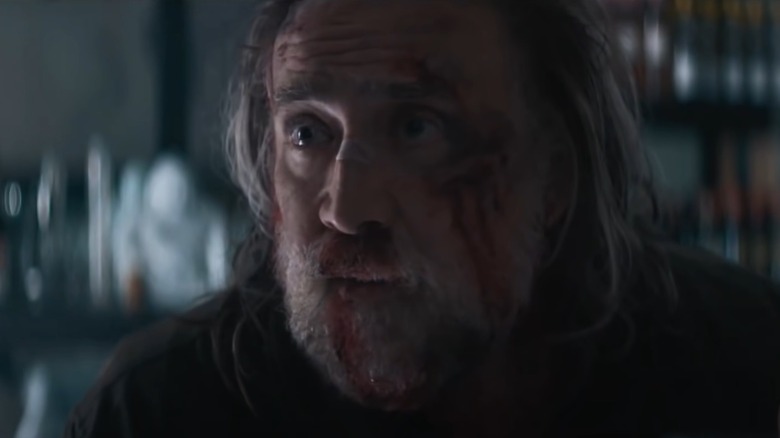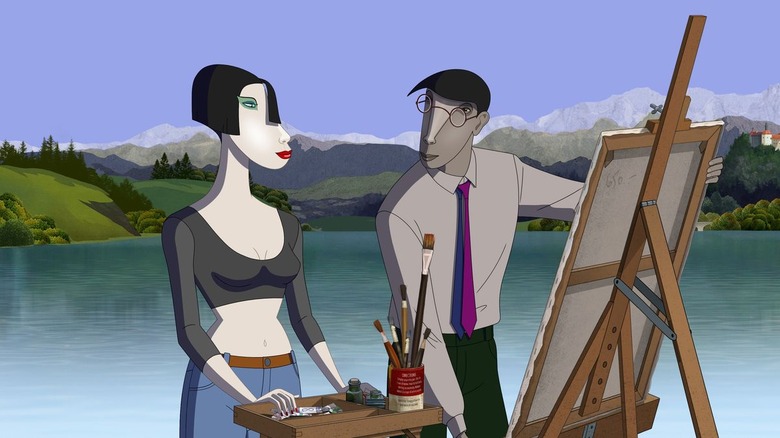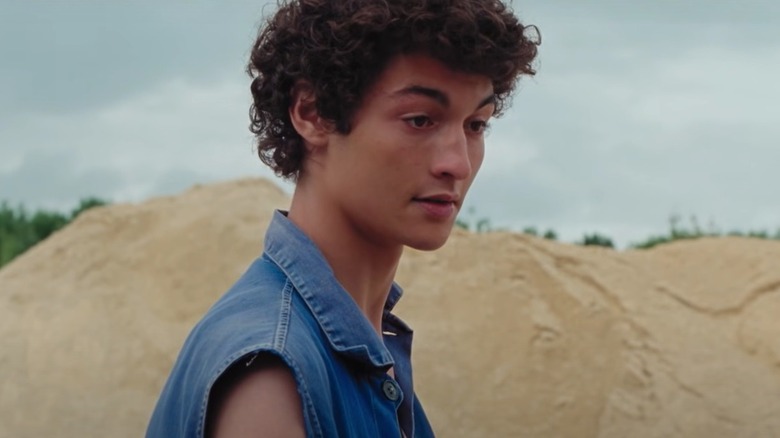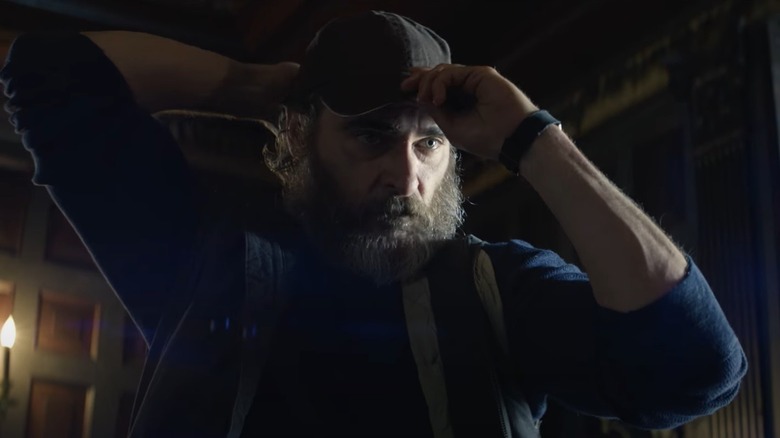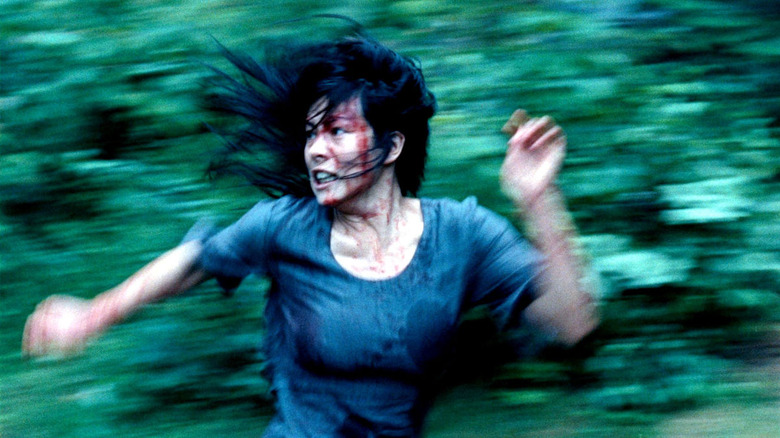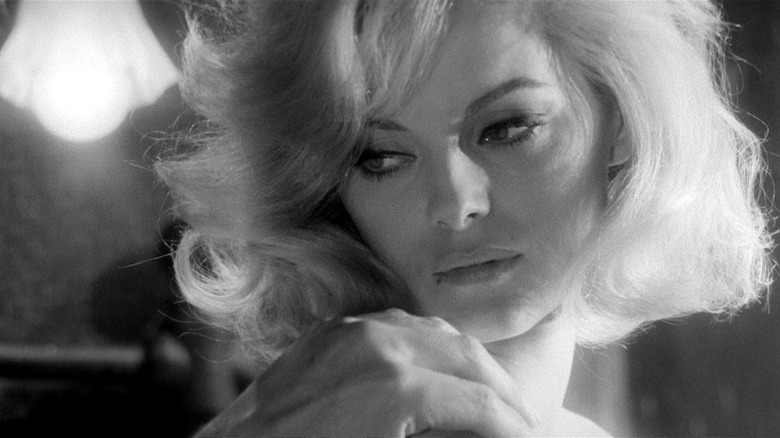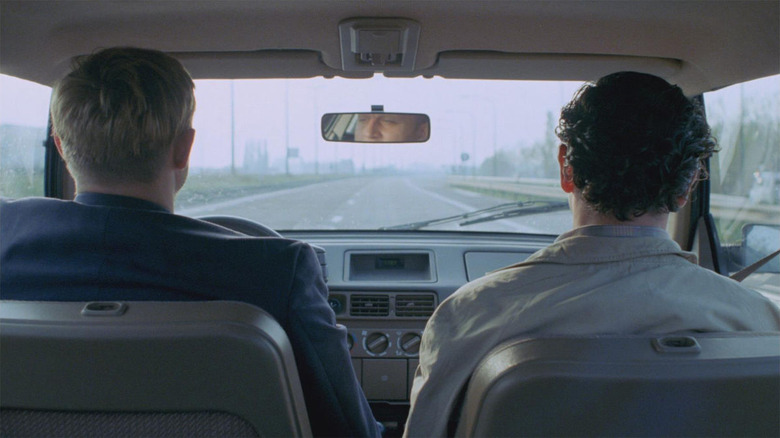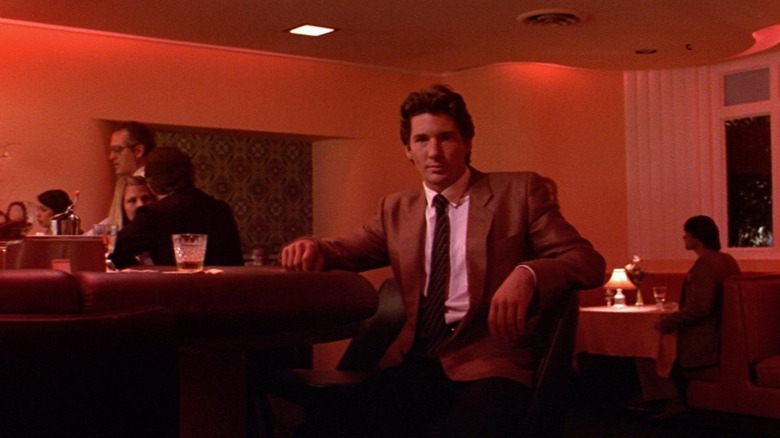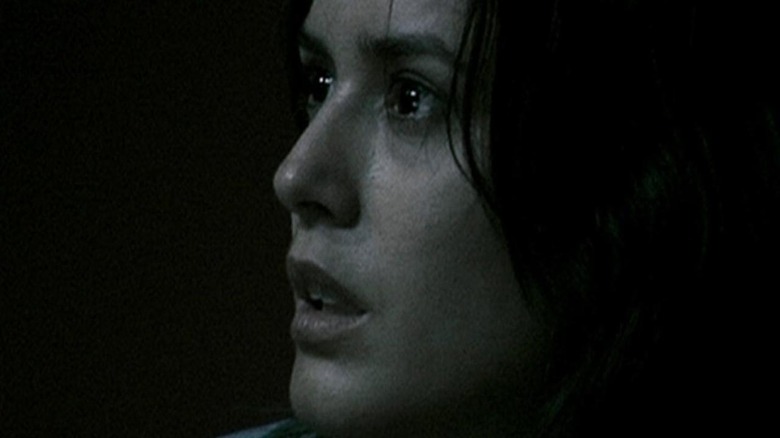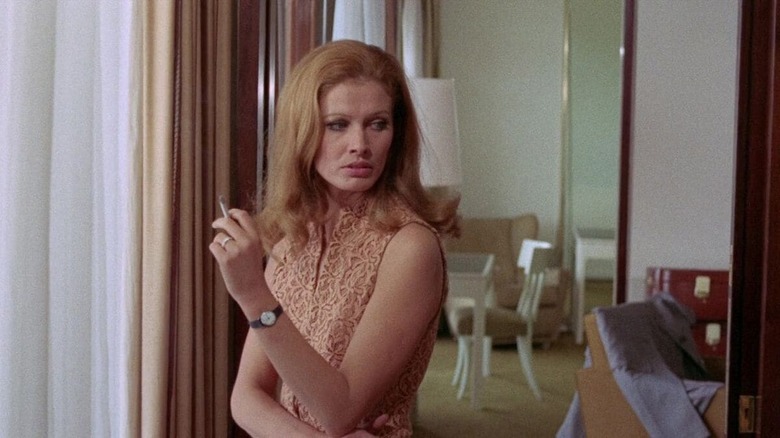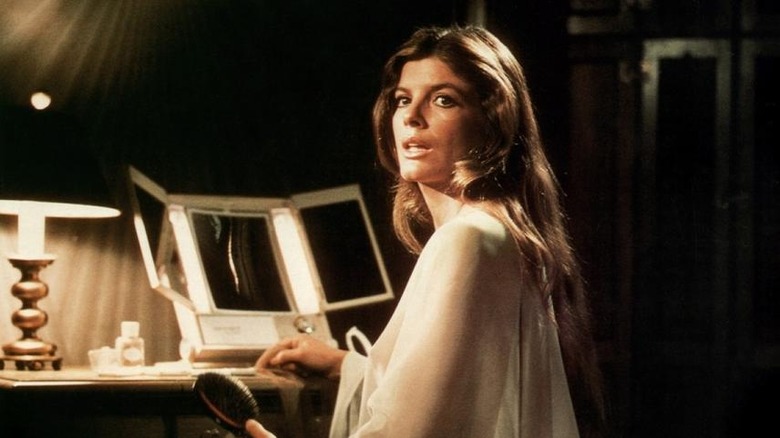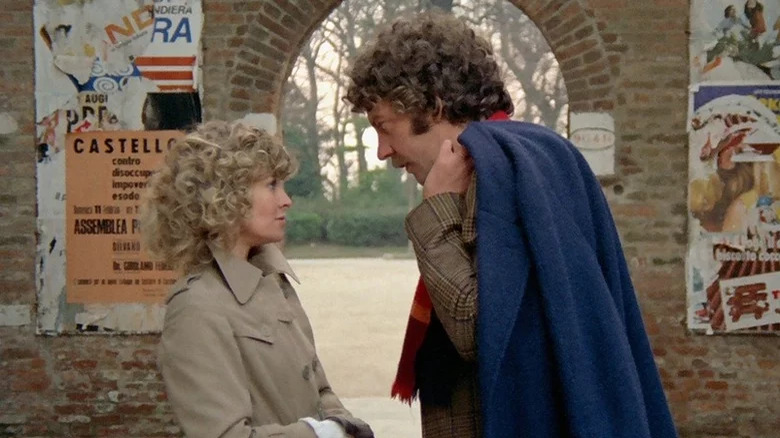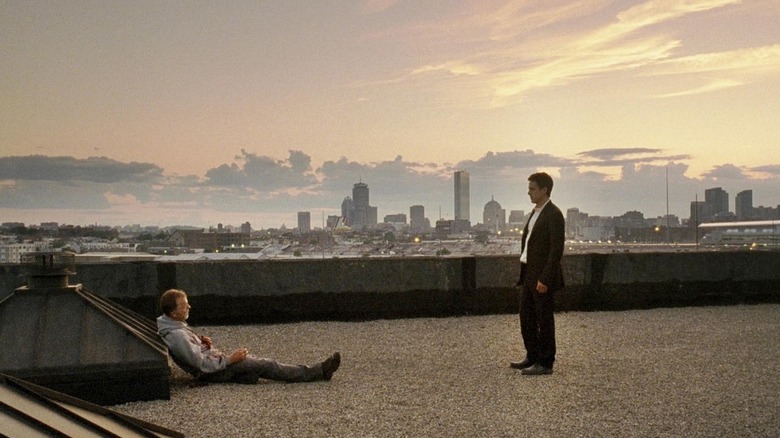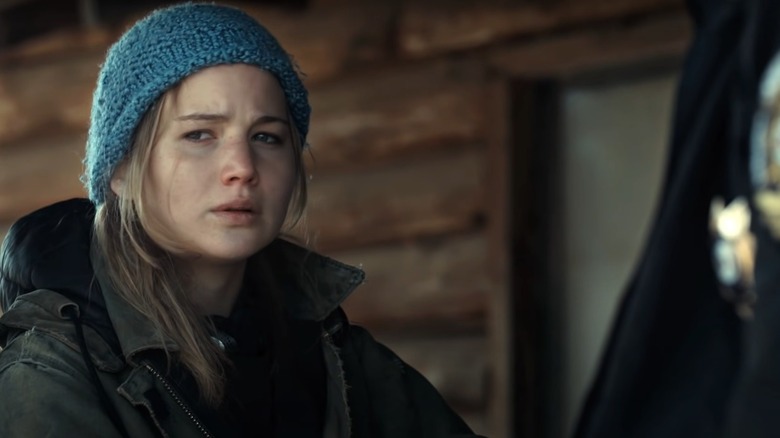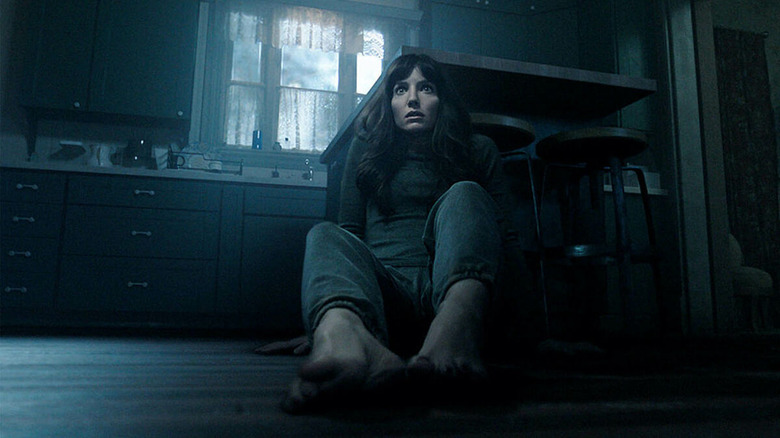64 Most Underrated Mystery Movies You Need To Watch
The mystery genre is almost a mystery itself. Is it limited to whodunnits and procedurals, or is it open to the supernatural and worlds of science fiction? Does "mystery" describe just the plot, or does it describe an aesthetic as well? For the purposes of this list, we've decided that anything with a central question of "who," "what," "why," and/or "how" is a mystery.
This means you'll find movies below that range from comedies to horror along with the more standard crime dramas. We've included movies from classic mystery genres like film noir and Italian Giallo (along with some more recent iterations of these classic genres), and some perhaps more unexpected films including a mecha anime and a film starring everyone's favorite puppets.
There's a flavor of mystery here for everyone, whether you're looking for something kid-friendly or something you can only watch when the kids aren't home, we've got you covered. Be warned though — not every mystery is solved, as some movies are more interested in questions than answers. So, without further ado, let's dive into the mysterious world of mystery movies.
Brick
"Brick" is the first film by writer-director Rian Johnson, who made a little movie called "Star Wars: Episode VIII – The Last Jedi" and then followed that up with the best whodunnit in years in "Knives Out." Like "Knives Out," "Brick" sees Johnson tackling a classic mystery subgenre and twisting it to create something excitingly new. Here, that subgenre is hard-boiled noir, and the twist is that the film is about high school kids. It's a bold swing, making teens talk in slang that comes so fast and is so specific it could take an audience half the movie to catch up, but it works surprisingly well.
The story begins when Brendan (Joseph Gordon-Levitt) receives a mysterious phone call from his ex-girlfriend Emily (Emilie de Ravin) in which she mentions several things that he doesn't quite understand, including a "bad brick." The mystery deepens and becomes more sinister when Emily's body is discovered soon after the call. The movie then follows Brendan as he speaks with members of various cliques at school and attempts to figure out exactly what led to her death.
It's a fantastically stylish movie that tells the kind of private investigator story we might see in a noir from the '40s, with the same fast-talking and double-crossing. Only, instead of dark and rainy streets, the backdrop is a small southern California town. "Brick" is an underrated movie from a talented filmmaker that you really need to see if you haven't already.
The Seventh Victim
"The Seventh Victim" is a film from Val Lewton, who produced "Cat People," which we think is the best horror movie of the 1940s. It brings the same fantastic sense of dread to audiences. Like "Cat People," "The Seventh Victim" leaves much to the imagination, often making use of deep black shadows on the screen to hide potential threats — or to simply make viewers wonder what's lurking there. It's also one of the earliest movies to openly acknowledge lesbian relationships, as noted by Vice.
The movie follows Mary Gibson (Kim Hunter), a young woman whose boarding school tuition suddenly stops being paid by her sister Jaqueline (Jean Brooks) when she goes missing. Mary then goes to New York to attempt to find her sister, where she discovers a strange and ominous secret society to which her sister belonged. The movie initially functions as a noir when Mary arrives in New York, using all of the heavy shadows typical of the genre (it even includes a private detective character that Mary hires). But it soon changes into something more akin to horror as Mary learns that her sister seemingly wanted to die.
It's a genuinely unnerving film that retains its power to disturb all these years later. That's largely because, while it answers the questions of its plot, it leaves us with questions about the human psyche.
Long Day's Journey Into Night (2018)
The most newsworthy aspect of "Long Day's Journey Into Night" is the nearly one-hour-long 3D take that makes up the film's back half, something that's likely not available in its original intended form to most at-home viewers. But the third dimension of that sequence is only one aspect of what makes it incredible and we think the movie is well worth seeking out for mystery fans, even if they can't get hold of a 3D Blu-ray and TV.
The story follows Luo Hongwu (Huang Jue), who returns to his hometown for his father's funeral but finds himself searching for his old flame Wan Qiwen (Tang Wei). The central mystery is rather simple: Where is Wan Qiwen? But the film uses this simple question, and Luo's quest to find her, to address questions of memory and its relationship to dreams. It slips back and forth between the present and the past, showing the audience moments of the two lovers when they were together.
As the film goes on and enters its bravura long take, it seems that Luo has entered a dream, but a dream where he can find some version of Wan and be at peace. "Long Day's Journey Into Night" is a very unique movie and one that all film fans, not just mystery fans, need to watch.
Anatomy of a Murder
"Anatomy of a Murder," based on the book of the same name by Robert Traver, is not a murder mystery movie. Yes, the movie starts with a murder, but the killer admits to the murder — he says that he killed the man because the man raped his wife. It's this assault that becomes the central mystery of the film. But, unlike other mysteries which follow detectives (police, private, or self-assigned) as they investigate and collect clues, "Anatomy of a Murder" is a courtroom drama.
The movie centers on the case of the murder of Barney Quill by U.S. Army Lieutenant Frederick "Manny" Manion (Ben Gazzara), who accuses Quill of having raped his wife Laura (Lee Remick) and states that he killed Quill in retaliation. But our lead character isn't Manion. Instead, it's his defense lawyer Paul Biegler (James Stewart). Paul seeks to convince the jury that Quill did assault Laura and that Manion's actions were born from "an irresistible impulse" on behalf of his wife.
It's an uncomfortable watch, as the majority of the film takes place in a courtroom and centers on the question of whether or not Quill actually raped Laura. Infuriatingly, blame gets shifted onto Laura because she's flirtatious and has been married before. But the drama is astounding, and it has earned its place among the most celebrated films of all time. Despite its status as an underseen classic, "Anatomy of a Murder" has been named one of the "greatest legal movies" by the American Bar Association and selected for preservation by the Library of Congress.
Body Double
"Body Double" is Brian De Palma's most overt Hitchcock riff in a filmography full of films that pay respect to the master of suspense. The plot of "Body Double" is a mix of two of Hitchcock's best films, both starring "Anatomy of a Murder" star James Stewart — "Rear Window" and "Vertigo." But it manages to be something wholly original due to its surprisingly brutal violence and its focus on the adult entertainment industry in its latter half.
The movie begins when Jake Scully (Craig Wasson) takes on a housesitting job at a home in the Hollywood Hills from Sam Bouchard (Gregg Henry). The home belongs to a wealthy friend of Sam's who is out of town, and while the home has a bevy of astounding attributes and amenities, Sam is particularly interested in drawing Jake's attention to a telescope he has set up to spy on a neighbor across the street. The neighbor is a beautiful woman who does the same sensual dance at the same time every night, something Sam is all too pleased to let Jake in on.
While the initial mystery of the film seems to be "who is this woman?" it quickly morphs into something much more deadly when she is murdered. And yet another layer is added when Jake sees adult film performer Holly Body (Melanie Griffith) do the same dance that the woman used to do, leading him to take it upon himself to investigate the connection between Holly and the woman who has been murdered. It's a thrilling movie that updates Hitchcock for the era of the slasher and erotic thriller, with some of De Palma's boldest directorial choices and a fantastically over-the-top score from composer Pino Donaggio.
Under the Silver Lake
"Under the Silver Lake," David Robert Mitchell's follow-up to indie horror classic "It Follows," is quintessential stoner noir (a subgenre that may appear again on this list). The movie's protagonist smokes weed, the story takes place in Los Angeles, and, perhaps most importantly, the mystery revolves around a conspiracy that's so big it seems like it might just be paranoia gone awry.
The movie follows Sam (Andrew Garfield) as he searches for the beautiful Sarah (Riley Keough), who moved into his apartment complex shortly before disappearing. During his search he uncovers what appears to be a vast conspiracy with secret symbols, connections to strange urban legends, and the involvement of the rich and powerful in the entertainment industry. "Under the Silver Lake" is a wonderfully odd film that moves seamlessly between comedy (often at Sam's expense), edge-of-your-seat thriller, and Lovecraftian cosmic horror. The answers Sam finds only lead to bigger (and more ridiculous) questions.
It's a movie that fans of neo-noir, mysteries, and stoner comedies can all agree on. While we won't say it's as good as "The Big Lebowski," it might be the best movie to appeal to that crossover of fans since the Dude went in search of the people who broke into his house and ruined his rug.
The Wailing
"The Wailing" is a big movie. Not necessarily in scale, as it really only focuses on and takes place in the small village of Gokseong (which also serves as the film's Korean title). But in its over two and a half hour runtime the movie covers a huge amount of plot and invokes worlds beyond our own to tell a story that centers on universal themes of family and doubt.
The story begins when a strange disease that drives people to kill those closest to them begins to spread throughout the village. Investigating police officer Jong-soo (Kwak Do-won) becomes personally involved when his daughter Hyo-jin (Kim Hwan-hee) seems to have contracted it. The plot moves seamlessly between murder mystery and supernatural horror: The initial question is who has killed these people and why, but then we start to wonder how the disease works and where it has come from.
"The Wailing" succeeds as both of those types of mysteries. Its focus on a police officer makes the first part of the movie follow in the footsteps of other mystery horror films centered on serial killing. But when the disease is discovered and Hyo-jin becomes sick, what seemed like a human evil is revealed to be something greater and much more difficult to uncover.
In a Lonely Place
"In a Lonely Place" is one of the few movies on this list that mixes mystery with romance, though we wouldn't recommend it for date night. The film follows Dixon "Dix" Steele (Humphrey Bogart), a Hollywood screenwriter who becomes the lead suspect in a murder case. At the same time, he begins a romance with his beautiful new neighbor Laurel Gray (Gloria Grahame).
While the film opens with scenes of Dix spending time with the young woman who is murdered that seem to prove his innocence (the audience sees him give her a cab fare and say goodbye as she leaves his home on the night of the murder), our certainty is soon challenged. It becomes clear that Dix struggles with a temper that can lead him to become violent, and just as this fact becomes a key point of interest in the mystery of who murdered the young woman, it also becomes a problem in Dix's relationship with Laurel.
"In a Lonely Place" is a noir like "Sunset Boulevard" (which came out the same year), centering on the lives of those in the movie industry. It uses its central mystery to launch into a character study that reveals a wonderfully complex — but perhaps not wonderful — person. It deserves just as much attention as "Sunset Boulevard," and while it hasn't yet achieved the same level of fame, it seems to be on its way. In 2007, it was selected for preservation by the Library of Congress. In 2019, it was named the best film noir of all time by Slant.
Blood and Black Lace
"Blood and Black Lace" is the first Giallo on this list, and is prototypical for the entire genre. While "The Girl Who Knew Too Much," Mario Bava's previous film, is often considered the first Giallo, "Blood and Black Lace" is both a more influential and a better movie. It's incredibly lurid for a film released in the early 1960s, both in terms of its extreme color saturation and the violence and sexuality depicted. It established some of the key tropes of the genre going forward, including a black-gloved killer and frank depictions of sexuality.
The story centers on a fashion house and the models who work there as they begin to be killed by a mysterious figure seemingly in search of a diary that includes incriminating evidence. But the diary contains so much incriminating evidence about so many different things in the fashion house that it seems any of the models or other employees have the motivation to kill to get their hands on it. There are many characters, red herrings, and a significant exposition drop towards the end of the film that reveals who has been doing the killing.
The mystery at the heart of the movie is engaging and keeps the audience guessing, but it's the colorful and over-the-top style that makes "Blood and Black Lace" one of the most underrated mystery movies you need to watch.
Kiss Me Deadly
"Kiss Me Deadly," adapted from a book of the same name by Mickey Spillane, is one of the hardest of the hard-boiled noir films of the classic noir era. And with a protagonist named Mike Hammer, played to perfection by Ralph Meeker, that seems fitting. It's not just that Mike is a tough, broad-shouldered guy who is always ready for a fight, but the world of the "Kiss Me Deadly" is crueler than most of its contemporaries — crueler to the characters in its story, and crueler to the audience in its hopelessness. But that doesn't mean you shouldn't watch it. In fact, it's that cruelty that makes it so special for a classic film noir.
The story begins when Mike, a private detective, discovers a young woman who has escaped from a psychiatric hospital and begs Mike to remember her. Shortly after this encounter, the girl is killed by a group of men who also attempt to kill Mike, leading him to investigate. His investigation leads him all around Los Angeles. He speaks to the young woman's roommate, crashes a party at a gangster's house, visits police stations and a beach house, and hears talk of a mysterious box that holds something that may be related to the Manhattan Project.
We won't give anything away here, but suffice to say that "Kiss Me Deadly" isn't just one of the toughest noirs, it's likely also the most surprising, which makes it a must-see for all mystery fans.
A Shot in the Dark
"A Shot in the Dark" is the first (but certainly not last) movie on this list that is an all-out comedy. This first sequel to "The Pink Panther" is better than its predecessor in almost every way. Loosely based on a play by Marcel Achard, "A Shot in the Dark" is both a more exciting detective story and a much funnier comedy than "The Pink Panther" as it centers on Peter Sellers' Inspector Clouseau.
The story begins when a chauffeur is murdered at the home of millionaire Benjamin Ballon (George Sanders). Because he employs a large number of staff members, there's a significant pool of suspects. But the case seems clear cut — the beautiful maid Maria Gambrelli (Elke Sommer) was in the room with the man when he was murdered and was found with a literal smoking gun. The two were romantically involved, so the murder could easily have been a crime of passion, yet Clouseau is convinced of Maria's innocence and sets out to prove that she is not the murderer.
The setup is classic whodunit stuff, with a large cast of characters who could all potentially be guilty. But what makes "A Shot in the Dark" an underrated mystery movie you need to see is Sellers' brilliant comic performance as Clouseau. He is a clumsy fool who makes slapstick into an art form, yet he manages to be just as funny with his words as he is with his body.
The Leopard Man
"The Leopard Man," like "The Seventh Victim," is a film produced by Val Lewton for RKO in the early 1940s (both films came out in 1943). But unlike "The Seventh Victim," which was directed by up-and-comer Mark Robson, "The Leopard Man" was helmed by Jacques Tourneur, who just the year before had delivered the classic "Cat People." Based on the book "Black Alibi" by Cornell Woolrich, "The Leopard Man" uses darkness to create and release tension through what we now know as jump scares. It's also one of the first movies to deal with a serial killer, even though that term had yet to be coined.
The story centers on a small New Mexico town where a show leopard that has escaped its captors kills someone and inspires a human to follow suit, leading to an investigation. It's a creepy movie that boasts some big scares, but it's just as frightening for the look it takes at human psychology and what might drive someone to kill. Of course, it's also a fantastic mystery film. Nightclub owner Jerry Manning (Dennis O'Keefe) and the local police investigate the murders and get led down multiple roads before finding the real killer.
What Have You Done to Solange?
While "Blood and Black Lace" is certainly a foundational film for the Giallo subgenre due (in part) to its depiction of sexuality, it looks downright tame next to "What Have You Done to Solange?," which arrived in theaters eight years later. "What Have You Done to Solange?" is a much sleazier affair, both in its violence and in its considerable amount of nudity. But there's much more to the film than sleaze, which is why it lands on our list of underrated mystery movies you need to watch.
What makes the film a must-see is the mystery at its center. "What Have You Done to Solange?" follows college professor Enrico Rosseni (Fabio Testi), who becomes a suspect when one of the young women at the school, who also happened to be his mistress, is killed. But as the body count grows and Rosseni is absolved, the mystery of who is killing these young women and why leads Rosseni to Solange, who attended the college briefly before disappearing. What happened to Solange and how the killings relate to her then becomes the central focus of the film, and the reveal is certainly not something most (if any) viewers will see coming.
Phantom Lady
"Phantom Lady," based on a novel by William Irish (a pseudonym for Cornell Woolrich), is the first Hollywood film noir from noir legend Robert Siodmak, who played a significant role in shaping the subgenre with his many films throughout the 1940s. The story centers on Scott Henderson (Alan Curtis), who, after a fight with his wife, goes out and spends the evening taking in a show with a beautiful young lady. She refuses to give Scott any information about herself. When he returns home, his wife has been strangled and, try as he might, Scott cannot locate the woman he was with at the time of his wife's murder. All of the other people that they interacted with say they have no memory of this (you guessed it) phantom lady.
When Scott's investigation fails, he is tried and placed on death row, but his secretary Carol Richman (Ella Raines) believes her boss (partially because she is in love with him and can't imagine him having murdered anyone). She sets about finding the mystery woman and uncovering the real reason everyone Scott and the woman came into contact with on that night say that they never saw her.
It's a fantastic mystery story that unfolds with great style. Siodmak uses the classic heavy shadows of noir to create an inescapable atmosphere that places the audience right with Scott as he begins to feel more and more hopeless about finding the mystery woman.
My Name is Julia Ross
"My Name is Julia Ross," based on the book "The Woman in Red" by Anthony Gilbert (the pseudonym of Lucy Beatrice Malleson), is equal parts gothic horror and classic 1940s noir. The story centers on the titular Julia Ross (Nina Foch), who, desperate for work, takes a job as a live-in secretary to a wealthy older widow. But a few days after accepting the job and moving in, she awakens to find herself in a room in the mansion on a cliff over the sea (classic gothic horror iconography) that she cannot leave.
All of her things are gone and she is continually referred to as "Marion" by the staff of the home. When she attempts to tell them that her name is Julia they seem to pity her. She soon meets the widow's son Ralph (George Macready), who tells her that she is his wife Marion and that she has experienced a nervous breakdown. The rest of the movie then follows her attempts to escape and unravel the mystery of why the widow and her son are keeping her prisoner and attempting to convince everyone that she is someone else.
It's a tight story, both in scope and runtime (the movie lasts just over an hour), but it never lacks tension or atmosphere. We're in constant fear for Julia's safety and cannot help but wonder why such an elaborate scheme has been concocte
The Fifth Cord
"The Fifth Cord," based on the novel of the same name by Dominic Devine, is one of the most stylish Giallo films of the early 1970s. The story begins at a New Year's Eve party full of friends and acquaintances with intricate relationships and connections to one another, lending the film a significant pool of suspects when one of the partygoers is attacked on his way home. The greatest narrative difference between "The Fifth Cord" and its whodunit brethren is that John Lubbock (Maurizio Bonuglia) isn't killed in the attack, so there isn't a dead body when the protagonist Andrea Bild (Franco Nero of "Django" fame) begins to investigate the attack. Of course, as the film goes on, the bodies begin to pile up.
What makes "The Fifth Cord" one of the most underrated mystery movies — and underrated Giallo specifically — is not the plotting, though. Rather, it's the incredible style with which director Luigi Bazzoni and cinematographer Vittorio Storaro (who would go on to shoot "Apocalypse Now" at the end of the decade) shoot and light the film. Nearly every image in "The Fifth Cord" is striking and memorable for its beautiful interplay of light and shadow, evoking film noir while fitting firmly in the colorful world of the 1970s.
"The Fifth Cord" is a mystery movie first and foremost, and the twists and turns certainly make it a success as a story. But it's the fact that it's such a beautiful-looking film that makes it one of the most underrated mystery movies you need to watch.
Station West
"Station West," based on the novel of the same name by Luke Short, is one of a few films from the classic Hollywood era that mixed the Western and noir genres to great success. What makes "Station West" stand out is that it's the best mystery movie and arguably the best of them all at mixing the iconography of Westerns and noir. The movie follows Haven, a military intelligence officer who gets sent to a small town to investigate the murder of two soldiers who were robbed and killed while protecting a shipment of gold.
"Station West" is a solid mystery film, with its investigating military man and whodunit set up, but what makes it really special is the way that it blends the staples of Western and noir films so seamlessly. Haven literally rides into town at the start of the movie and out again at the end, and the film has a memorable femme fatale in Charlie (Jane Greer), who can compete with any of the women from the most famous noir films. Because it so perfectly hits these classic beats, it's a great introduction to both the noir and Western genres for any mystery fans who are more familiar with modern mystery movies.
In the Mouth of Madness
While John Carpenter may have directed the best sci-fi horror movie of all time with "The Thing," not all of his movies are as well-loved. "In the Mouth of Madness" is a later film from Carpenter, arriving in 1994, but it deserves just as much attention. It's inspired by the work of H.P. Lovecraft, drawing its name from his novella "At the Mountains of Madness." It isn't a direct adaptation of any of Lovecraft's works but instead seeks to create something that explores and evokes a sense of madness in a way similar to Lovecraft.
The film follows insurance investigator John Trent (Sam Neil), who is tasked with finding horror novelist Sutter Cane (Jürgen Prochnow). Accompanied by Cane's editor Linda Styles (Julie Carmen), Trent sets out to find the mysterious author, whose most recent book seems to be driving anyone who reads it mad. Their investigation leads them to a small town in New Hampshire called Hobb's End that serves as the setting for many of Cane's books. In this town, the boundary between reality and fiction begins to slip and potentially deteriorate entirely as Trent and Styles encounter places and people from Cane's novels.
"In the Mouth of Madness" isn't simply a mystery centered on finding a missing author. It also seeks to ask big questions about sanity and our relationship with reality. It's one of John Carpenter's best films and deserves to be celebrated as one of the best mystery movies ever made.
The Handmaiden
"The Handmaiden," based on the book "Fingersmith" by Sarah Waters and helmed by "Oldboy" director Park Chan-wook, is one of the best Korean movies of the 2010s and is certainly one of the most underrated mystery movies of all time. The story follows young pickpocket Nam Sook-hee (Kim Tae-ri), who is enlisted by a con artist to serve as the handmaiden to Izumi Hideko (Kim Min-hee), a young woman whose uncle made a fortune by helping the Japanese colonize Korea. The goal is to steal her huge inheritance.
The plot may not sound like the setup for a typical mystery — there isn't a dead body, a missing person, or anything else resembling a standard driving question for a mystery film. The question that drives "The Handmaiden" is "why are these characters behaving this way?" It's a film that tells its story in three parts, each of which recontextualizes the part that came before in such a way that we never know exactly who is scheming against who until the film's pitch-perfect finale.
"The Handmaiden" is an unconventional movie in many ways and one that mystery fans need to see, not just for the brilliant way in which the film unfolds, but also for its gorgeous period setting and the incredible performances from all the lead actors.
Tenebrae
"Tenebrae" was Giallo master Dario Argento's return to the genre after his supernatural masterpiece "Suspiria" and its loose follow-up "Inferno." It's also one of his best films, likely because it's a horror movie about horror. It's a film that allows the writer-director to engage with the public perception of his work and the controversy (and significant censorship) that usually accompanied it. The story follows American horror author Peter Neal (Anthony Franciosa) on a trip to Rome, where he receives a letter from an anonymous killer. The letter states that the killer is inspired by his work and will commit murder. While the police investigate, Neal begins his own investigation, as he feels he must know who would be driven to murder by fiction.
"Tenebrae" is a fantastically stylish film that contains some of Argento's most over-the-top (in a good way) horror scenes, and one that continuously confounds viewers right up until the end. It is focused just as much on the horror of its murder set pieces as its mystery, which come together to create a true Giallo classic. The fact that the film also engages with questions about the relationship between violence in art and reality makes it one of the most underrated mystery movies you need to watch.
Gaslight (1944)
While there is a "Gaslight" movie from 1940, also based on the play of the same name by Patrick Hamilton, it's the version from 1944 starring Charles Boyer, Ingrid Bergman, and Joseph Cotten that we think is a mystery movie you need to see. The story inspired the term "gaslighting," meaning to manipulate someone to the point that they doubt their sanity.
The plot centers on the beautiful Paula (Bergman), who left London for Italy as a child after the murder of her caretaker aunt. She returns to her childhood home after she marries the charming but mysterious Gregory (Boyer). The movie puts its cards on the table fairly early on as we see Gregory purposefully manipulate Paula into questioning her memories, but the mystery that drives the film's plot holds throughout: Who is Gregory, and what does he really want from Paula? The film also follows Scotland Yard's Brian Cameron (Cotten) as he investigates the cold case murder of Paula's aunt and the strange experiences Paula describes to him. Like "My Name is Julia Ross," it beautifully mixes noir and horror filmmaking to create something truly special.
Picnic at Hanging Rock
"Picnic at Hanging Rock," based on the novel of the same name by Joan Lindsay, never provides any answers to its central questions. That's not so much a spoiler as it is a key part of what makes the film one of the best mystery movies ever made. What begins as an apparent crime story about a group of young women going missing on a field trip to the titular rock soon morphs into something ethereal that seems more akin to folk and cosmic horror than any other missing person movie. It's a beautifully realized movie that emphasizes atmosphere over anything else.
The joy of "Picnic at Hanging Rock" is not any promise of answers to its central mystery, but the fact that it allows us to simply sit in the mystery. The movie follows a number of characters who each attempt to understand and make peace with the mystery more than solve it, inviting the audience to do the same. It's certainly not for everyone, but those who are interested in a movie that is comfortable in the mysterious — even if it is a dangerous and frightening mystery — will find "Picnic at Hanging Rock" deeply rewarding.
The Long Goodbye
"The Long Goodbye," adapted from the Raymond Chandler novel of the same name, is the only movie on this list about Philip Marlowe, played in this instance by Elliott Gould. It's one of the first movies about the beloved private eye to be released outside of the 1940s, which is probably how it came to be underrated. It is less of a pure noir and more of a hangout movie that moves the usually smooth-talking detective out of the decade of his creation and places him in the lethargic 1970s, when the film was made and released.
It's been called satire, revisionist noir, and neo noir, all of which make sense, but it's a difficult movie to categorize as it simultaneously seems to love the noir genre and think it's a bit silly. From the start, the movie replaces the classic noir voiceover with Gould incessantly talking and mumbling to himself, something that could be annoying, but he makes it charming and even cool. It's Gould's performance that holds the entire film together: He is so magnetic that we can't help but love him and want him to succeed.
The mystery itself — a question of why Marlowe's friend Terry Lennox (Jim Bouton) needed to get out of town and who killed him after he left — is intriguing, but what makes "The Long Goodbye" a must-see is simply how delightfully it draws the audience into its hazy world.
Cure
"Cure," from celebrated Japanese director Kiyoshi Kurosawa, follows in the footsteps of "Se7en" as a modern serial killer mystery film that blurs the lines between a pure crime procedural and horror because of the gruesomeness of the crimes. Several murders have been committed by different people using different methods. Each victim has an X carved into their throat by the killers, who are then stunned by their own behavior.
The movie follows detective Kenichi Takabe (Kōji Yakusho), who investigates the murders with the help of psychiatrist Sakuma (Tsuyoshi Ujiki). Takabe struggles to connect the murders in any logical way until he entertains the possibility of the murderers being hypnotized. It's a somewhat surprising central plot point for a mystery that is this dark and serious, but the way that hypnotism is portrayed in "Cure" is fascinating, beautiful, and genuinely frightening — especially as the film goes on and the viewer becomes somewhat hypnotized by the increasingly unconventional form.
"Cure" is part of the same movement in Japanese film that gave us "Ringu" and "Ju On: The Grudge," and it deserves just as much attention as those films. It also ranks among "Parasite" director Bong Joon-ho's favorite films of all time. "Cure" is a must-see for fans of serial killer mysteries, and one that's sure to linger with viewers after the credits roll.
Mother (2009)
Speaking of Bong Joon-ho, his film "Memories of Murder" is rightly celebrated as one of the best mystery movies of all time, but his later mystery film "Mother" is still underseen and deserves just as much praise. Like nearly all of his films, "Mother" manages to walk a tonal tightrope. It offers moments of levity and silly comedy despite being about a murder, and it uses this tonal control to deliver a major emotional punch by the end.
The story follows an unnamed woman (Kim Hye-ja), credited simply as Mother, whose intellectually disabled son becomes the prime suspect in a murder case. Her mission is to prove that he is innocent. The movie has twists and turns galore, the audience's trust shifts from character to character, and there's significant darkness to the world of the film that is slowly uncovered throughout. But at its core, "Mother" is a mystery movie that is more interested in a mother's love for her child — and the desperate lengths she will go to in order to protect him — than it is a laser-focused whodunit. And it's all the better for it.
It's a difficult movie to watch at many points, but the story's central focus on Mother and her love for her child makes it one of the most emotionally powerful films on this list.
The Player
"The Player," by "The Long Goodbye" director Robert Altman, begins with an inviting mystery but uses that mystery more as a jumping-off point to explore the Hollywood of the early 1990s. This smart satire opens with an iconic long shot that comments on itself and immediately sets the tone for the rest of the film as a movie about movies. Studio executive Griffin Mill (Tim Robbins) receives an anonymous postcard with a threatening message, one that makes him believe a writer he once rejected is going to take violent action against him soon. As the movie goes on, more postcards appear, leading Mill to investigate writers he has previously met with and rejected in the past. All the while, the hotshot young executive Larry Levy (Peter Gallagher) seems to be making moves for his job.
The movie certainly has its thrilling moments, as the letters are unnerving and at one point the mystery mailer manages to sneak a rattlesnake into Mill's car. But what makes "The Player" one of the most underrated mystery movies ever is actually not its mystery — it's the world it depicts around that mystery. This is a world full of celebrities (there are so many cameos in the movie that it's impossible to spot them all in a single viewing), wealth, and glamor that's built on backstabbing, self-centeredness, and flat out disregard for other people. "The Player" shines a light on this world with a deft touch, keeping viewers glued to their seats from start to finish.
Caché
"Caché" is one of award-winning writer-director Michael Haneke's most unnerving films. It begins with a long static shot of the Paris home of its lead characters Georges (Daniel Auteuil) and Anne (Juliette Binoche). It seems to simply be a long take, but it's revealed to be a tape that the couple received on their doorstep from an anonymous person. Soon, more tapes arrive, including one of Georges' childhood home. They are wrapped in childish drawings of a boy with blood running down his mouth and a chicken being beheaded.
The drawings and tapes remind Georges of the Algerian boy Majid, who his mother almost adopted after his parents were killed during the 1961 Seine River massacre, during which French police killed at least one hundred Algerians demonstrating against a curfew. It's a disturbing film, and not just for its use of extreme violence — this is a masterclass in paranoia. Like Georges, we desperately want to discover who is sending these tapes, but the answer is haunting.
A Simple Favor
Paul Feig's "A Simple Favor" is a joyous mix of thriller, mystery, and dark comedy that contains some career-best performances from the always-magnetic Anna Kendrick and Blake Lively. The pair manage to play both the comedy and the heavier genre elements with the same level of commitment, making for a memorable movie experience. Lively in particular is showstopping, dressed in perfectly tailored suits as she flits between threatening and charming with ease.
The story, adapted from the novel of the same name by Darcey Bell, follows a single mommy vlogger named Stephanie (Kendrick), who befriends her mysterious and alluring neighbor Emily (Lively) shortly before Emily goes missing. Stephanie then takes it upon herself to investigate, and the movie delivers a twisty mystery that keeps viewers guessing while also keeping them laughing. It's also one of the few movies in recent years to truly evoke the heyday of the erotic thriller.
Shadow of a Doubt (1943)
Despite being Alfred Hitchcock's favorite of his own films, "Shadow of a Doubt" is still criminally underrated compared to the culturally impactful "Psycho" and "North by Northwest." It's a mystery why the film remains significantly underseen, as it's one of Hitchcock's best and includes a fantastic performance from Joseph Cotten.
The story follows Charles "Charlie" Oakley (Cotten) after he leaves a city where some men are looking for him and moves in with his sister's family in quiet Santa Rosa, California. Among his family members is his niece Charlotte "Charlie" Newton (Teresa Wright). The film then switches its focus to the younger Charlie — she initially delights in her uncle's visit, but she soon learns that he is a suspect in a widow killer case and cannot ignore some of his more aggressive and suspicious behavior. She doesn't want to believe that her beloved uncle could be a killer, so she sets about attempting to unravel the mystery of whether he's just a man with a temper or a vicious murderer.
"Shadow of a Doubt" is great for a number of reasons. It's as suspenseful as any great Hitchcock film. The focus on a young woman who is conflicted about her investigation into a family member adds a unique and surprisingly emotional element. And the setting in an idyllic town laid the path for the suburban terror of later horror classics like "Halloween" and "A Nightmare on Elm Street."
The Exorcist III
For a film that serves as a sequel to what is arguably the best horror movie of all time, "The Exorcist III" (based on the novel "Legion" by William Peter Blatty) plays more like a serial killer mystery than a supernatural horror movie. But when it takes an inevitable supernatural turn, it becomes one of the most original and disturbing horror movies to deal with possession and exorcism.
The story begins when a series of murders that match the modus operandi of a serial killer who has been dead for more than a decade commences. The film then follows Lieutenant William F. Kinderman (George C. Scott) as he investigates these attacks, one of which claims the life of his friend, a priest. Over the course of his investigation, he is led to a patient at a psychiatric ward who may know something about the murders and seems to have some sort of connection to the death of Father Karras in "The Exorcist."
"The Exorcist III" is a fantastic mystery movie and an unnerving horror at the same time, bringing the two together in a unique way.
Don't Torture a Duckling
"Don't Torture a Duckling" is certainly an attention-grabbing title, but we can assure you that no ducklings were harmed in the making of this Giallo movie, though a Donald Duck stuffed animal certainly is. Yet, it is still a shocking movie in many ways. It centers on the murder of children in a small Italian village and includes one of the most violent scenes in any film from the subgenre. Those aspects either pique your interest or confirm that this is not a film for you. But if you are interested in a disturbing and often sleazy Giallo film, "Don't Torture a Duckling" is one of the best.
Aside from its more controversial attributes, the setting in a rural village as opposed to a city (where most of its subgenre siblings take place) and the focus on the murder of boys instead of attractive young women make "Don't Torture a Duckling" stand out. The question of why anyone would want to murder children is just as powerful a driving question in the film as who has committed the murders. It also paints a picture of a town that is driven to violence by the deaths of their children, leading to the aforementioned incredibly violent scene in which townspeople attack a woman who is rumored to be a witch.
"Don't Torture a Duckling" is not a breezy watch, but it is a rewarding film that is sure to satisfy mystery fans with a taste for the taboo.
Psycho II
It may seem odd that the sequel to one of the most iconic mystery horror movies of all time is on an underrated mystery movies list, but "Psycho II" is sadly underrated, if not outright forgotten. Made more than twenty years after the original movie, "Psycho II" manages an incredible feat: It picks up the story of Norman Bates and makes him the most sympathetic character. It certainly helps that Anthony Perkins returns to the role and plays Norman, who has been released from a psychiatric hospital and declared cured, with so much innocence and sweetness that it's impossible not to root for him.
The mystery of the film begins when Norman starts to receive phone calls and notes from his mother, and the question arises: "Is Norman still seeing and hearing his mother persona or is someone purposefully driving Norman mad?" We won't reveal anymore, but the film does a beautiful job of ensuring that the audience can't quite know for sure right up until the end. It's very different to its predecessor, but it's worthy of a reappraisal as it's certainly a fantastic mystery movie and may be one of the best slasher sequels of the 1980s.
Event Horizon
A few years after leading the line in John Carpenter's "In the Mouth of Madness," Sam Neil starred in another underrated horror cult classic that revolves around a mystery. The two movies have some similarities, as they both deal with cosmic horror and things beyond human comprehension. Both protagonists attempt to understand the strange things going on around them, but while "In the Mouth of Madness" draws directly from Lovecraft, "Event Horizon" is much more akin to sci-fi horror like "Alien."
The movie follows a crew that includes Neil's Dr. William Weir as they embark on a mission to investigate a distress signal from the titular Event Horizon ship, which went missing in space seven years earlier. The crew of the exploratory ship finds the Event Horizon without too much difficulty, but the ship is empty, and it seems that there was a massacre of its original crew. Shortly thereafter, the new arrivals begin to hallucinate, seeing people from their past and visions of the things they fear most.
What is happening on the Event Horizon and what happened to the original crew is slowly revealed, with an incredibly unnerving atmosphere and some of the best uses of less-is-more extreme violence ever used in horror.
All the Boys Love Mandy Lane
Heavily inspired by the classic slashers of the 1970s and '80s, "All the Boys Love Mandy Lane" centers on a group of teenagers who go out to a remote ranch for a party and the murders that occur over the course of their first night there. It's a classic story, but what makes "All the Boys Love Mandy Lane" special is its simultaneous reverence and uncertainty about the slasher genre. The movie recreates plot points and the visual style of early horror movies, particularly "The Texas Chainsaw Massacre," but some of the twists and turns in the film's back half subvert the usual tropes of slasher films in fascinating ways.
"All the Boys Love Mandy Lane" uses its simple slasher and whodunit set up to create something that feels like one of the most important contributions to the genre in the 21st century, and for that, we think it's an underrated mystery movie that you need to watch.
Silent Hill
Adapted from the game of the same name, "Silent Hill" is one of the few video game adaptation movies that deserves to be more widely seen and better regarded. The movie, which was penned by Academy Award-winning "Pulp Fiction" co-writer Roger Avary, does an astounding job of bringing the eerie atmosphere of the game to the big screen to create something that feels genuinely otherworldly.
The movie centers on Rose Da Silva (Radha Mitchell), whose young adopted daughter Sharon (Jodelle Ferland) keeps having nightmares about the town of Silent Hill. Desperate for answers, Rose takes Sharon on a trip to the town so that they can discover what about the town is haunting the girl. When they arrive, they get in an accident, and Rose is knocked unconscious. When she comes around, Sharon has vanished. The rest of the movie then follows Rose as she attempts to find her adoptive daughter and uncover the secrets of the town, which seems to fluctuate between different dimensions, one of which is home to monsters.
It's a beautifully realized adaptation, and while it may go on a bit longer than it needs to, "Silent Hill" is worth a reevaluation as one of the most successful films to recreate not only the story but also the feeling of its source material.
In the Cut
Thanks to Jane Campion's return to film with "The Power of the Dog," "In the Cut" is beginning to receive a broad critical reappraisal. Based on the novel of the same name by Susanna Moore, "In the Cut" is an erotic thriller unlike any other. The film doesn't have the sheen of something like "Basic Instinct" and instead presents a dirty and threatening vision of New York in the early 2000s that serves its story about a teacher who becomes involved with a detective searching for a killer of women.
Along with Campion's specific visual style, "In the Cut" also offers some of the best performances from stars Meg Ryan and Mark Ruffalo. The film marked a major change in Ryan's career, who up until that point was largely thought of as America's rom-com sweetheart. Her performance feels real, full of feminine desire and fear in a way that is seldom brought to the screen. And Ruffalo manages to create a character who is equally threatening and alluring. We're afraid of his tough detective Malloy and the rough way that he talks, but also understand why Ryan's Frannie is attracted to him and begins a relationship with him.
It's a movie whose central mystery lends a backdrop to the romantic, or at least sexual, story at its core, but makes sure to satisfy the questions that the mystery poses. Campion delivers a climax that's as thought-provoking as it is thrilling.
Patlabor: The Movie
Most anime movies that follow up a TV show expect and require audience knowledge of characters and ongoing narrative arcs, so it's something special when an anime film is open to new viewers. "Patlabor: The Movie" isn't just one such anime movie, it's also one of the best anime and mystery movies of the 1980s, a great time for anime. The story follows a group of police officers who investigate why mecha (called "labors" in this universe) around Tokyo have begun to go on rampages of their own volition and cannot be stopped by their operators. It's unclear how and why these glitches, which are causing major damage and are dangerous to the citizens of the city, are occurring, but as the detectives investigate, the story expands to reveal more nefarious and destructive plans.
"Patlabor: The Movie" is a fantastic mecha movie and a fantastic mystery movie that is sure to please fans of anime and any viewers who have never seen a mecha before. The story is so compelling and gripping that it can be enjoyed by newbies and longtime fans alike.
Searching
The screenlife subgenre is here to stay, and 2018's "Searching" is one of the best examples we've seen thus far. While most screenlife movies are full-on horror flicks, which have seen varying degrees of success, "Searching" functions entirely as a mystery movie as John Cho's David Kim searches for his missing daughter Margot using a variety of technological tools at his disposal.
"Searching" manages to make the most of the screenlife format to maximize its impact both as an emotional story about a father missing his daughter and as a suspenseful missing person mystery. We often see text that is written then deleted and rewritten, showing us what David really wants to say and how desperate he is to find his daughter. And discerning audience members can spot files and images that become important later on in the narrative.
"Searching" isn't just one of the best examples of how the format can be used to create an incredibly exciting mystery film — at this point, it's the greatest example of how screenlife can be used to get the audience emotionally invested in its characters. It does this throughout, but almost all of that grows out of an opening sequence that serves as a powerful emotional introduction to the movie's characters.
Pi
Darren Aronofsky has had a storied career since he debuted with his feature "Pi" in 1998, which is often overlooked. "Pi," like many of the independent movies of the 1990s, has a big concept that it manages to fully explore on a small budget. The movie follows number theorist Max Cohen (Sean Gullette) who, after attempting to program his computer to predict the stock market, becomes obsessed with the mysterious 216-digit number it prints out before crashing. He speaks with his mathematics mentor Sol (Mark Margolis) about it, and Sol tells Max that he encountered the same number in his own work, but then tells him to take a break from whatever work led him to the number.
Of course, this only intrigues Max more, and when he meets Lenny (Ben Shenkman), a Hasidic Jew who does numerological research on the Torah, Max becomes even more determined to understand the number. "Pi" is a special kind of small-scale film that includes just a few characters and locations, with a singular focus on Max. But it asks big questions and creates a feeling of not just an expansive world within its narrative, but a sense that there are huge mysteries beyond human comprehension all around us.
Personal Shopper
"Personal Shopper" is one of Kristen Stewart's best films and won director Olivier Assayas the Best Director award at Cannes the year it premiered, but it's still significantly underseen. The movie, which Assayas wrote specifically for Stewart, follows her as Maureen, a personal shopper to a famous model who is mourning the loss of her twin brother Lewis. But Maureen is also a medium, as was her brother, and they made a pact that whichever of them died first would give the surviving sibling a sign from the other side. What begins as a simple mystery morphs into something more sinister when she encounters a malevolent spirit at his old home.
The mystery and sense of danger are amplified when she begins to receive strange text messages from an anonymous source. It's unclear whether the texts are coming from Lewis, a living person, or another spirit — perhaps the threatening one that Maureen encountered at Lewis' home. The movie takes some twists and turns, but the real gem here is the atmosphere that Assayas creates, which somehow unnerves and comforts at the same time. It's one of the movies on this list that is more interested in the mystery than the answers. The invitation that it extends to engage in that mystery is surprisingly warm despite the presence of malevolent spirits.
The Empty Man
"The Empty Man," loosely based on the comic of the same name by Cullen Bunn and Vanesa R. Del Rey, fell through the cracks when it was released to theaters amid the COVID-19 pandemic. It has gained a following since then, and it's easy to see why.
After the movie opens with a 20-minute story about American hikers in Bhutan who encounter some sort of entity that turns one of them catatonic in the 1990s, it brings us to the present day where Detective James Lasombra (James Badge Dale) is investigating the disappearance of a teenage girl. In his investigation, he discovers the story of "The Empty Man," an urban legend similar to Bloody Mary or Candyman. But what initially seems to be a story about some local teenagers messing around with urban legends soon expands to become a mystery about the nature of reality itself.
"The Empty Man" is a movie that will leave audiences with questions, the kinds of questions that beg to be talked about with friends — not just to make clear exactly what happened in the movie, but also to explore some of the equally fascinating and troubling ideas the movie presents.
Taste of Fear
British horror studio Hammer, best known for its "Dracula" films starring Christopher Lee, also released several smaller, less lavish productions — often also starring Christopher Lee. "Taste of Fear," also known as "Scream of Fear," is one such smaller production, but don't let the more modest scale fool you: "Taste of Fear" is a great movie that fans of mystery films will no doubt adore. In fact, Christopher Lee said that he thought it was the best Hammer movie of all time.
The story follows young wheelchair-user Penny Appleby (Susan Strasberg), who gets an invitation to move in with her estranged father. When she arrives at his home, her father isn't there, only her stepmother Jane (Ann Todd). One night Penny believes that she sees her father's body, and that's just the beginning of the strange happenings at the estate by the sea. She's told that she must be imagining things by her stepmother and her stepmother's friend Doctor Gerrard (Lee). The movie follows in the footsteps of "Gaslight" and also "My Name is Julia Ross," as it mixes gothic horror imagery with noir mystery.
A History of Violence
While David Cronenberg is best known for his body horror films, he's ventued into other genres on numerous occassions. One of the best films he's made since the turn of the century is "A History of Violence," based on the graphic novel of the same name by John Wagner and Vince Locke. The story begins when two murderers arrive in the small town diner owned by Tom Stall (Viggo Mortensen), aiming to continue their killing spree. Tom leaps into action and stops them with ease, and his heroics make the national news. Some time later, he's approached by Carl Fogarty (Ed Harris), who says that he knows Tom is really Joey Cusack, a member of the Irish mob in Philadelphia.
Tom says he doesn't know anything about organized crime and isn't the man Carl and his men are looking for. But Carl's arrival leads to questions about his skills and how easily he was able to dispatch the killers, and as the movie goes on, the audience begins to wonder whether Tom is Tom, or Tom is Joey. It's a thrilling movie with fantastic performances from Mortensen, Harris, and Maria Bello as Tom's wife Edie, who struggles with doubts about her husband and who he is as a man. It's also a fun mystery movie — we're not quite sure if Tom is lying or telling the truth.
Crossfire
The important film noir "Crossfire" made history when it became the first B-movie to be nominated for best picture at the Oscars. It was also one of the first films to address antisemitism, yet it's still often forgotten about today. The story, based on the novel "The Brick Foxhole" by Richard Brooks, centers on the murder of a Jewish man (the victim was a gay man in the novel but the Hays Code did not allow depictions of homosexuality on the big screen) by a member of the military.
The film follows the twin investigations by Captain Finlay (Robert Young), the official investigator set to the task by the military police, and Sergeant Keeley (Robert Mitchum), who wants to prove his friend Corporal Arthur "Mitch" Mitchell (George Cooper) is innocent. As the movie goes on it becomes clear that the only motive for the murder was prejudice and hatred, as none of the suspects knew the murdered man for more than a few hours. It's a gripping watch that lovers of the mystery genre won't be able to look away from.
If you or a loved one has experienced a hate crime, contact the VictimConnect Hotline by phone at 1-855-4-VICTIM or by chat for more information or assistance in locating services to help. If you or a loved one are in immediate danger, call 911.
Cutter's Way
"Cutter's Way," based on the book "Cutter and Bone" by Newton Thornburg, is another mystery movie that uses its initial mysterious premise to investigate themes and characters more than anything else. The movie arrived in theaters in 1981, less than a decade after the U.S. withdrawal from Vietnam. "Cutter's Way" is the story of Alexander Cutter (John Heard), a veteran who lost his right arm and leg in the war. The movie begins when Richard Bone (Jeff Bridges) sees a man in a large car in an alley early one morning after a night out. A generally mundane occurrence, but soon a young woman's body is discovered packed into a trashcan right by where Bone saw the car.
He begins to wonder who was in the car, and his friend Cutter becomes invested in Bone's mystery. When Bone says that he thinks it may have been local oil tycoon J.J. Cord (Stephen Elliott), Cutter is incensed and motivated to bring the rich and powerful Cord to justice for his crimes. Cutter is an alcoholic, has frequent bouts of uncontrollable rage, and is often just an unpleasant person, but the film treats him with a sympathy that makes it impossible to hate him. Instead, it invites us to ask why he behaves as he does. It's an emotionally powerful movie that offers fantastic performances from Bridges, Heard, and Lisa Eichhorn, who plays Cutter's wife.
The Great Muppet Caper
"The Great Muppet Caper" is the only movie on this list made for kids, so it's little surprise that there isn't any unbearable tension, significant suspense, or any murder. But what "The Great Muppet Caper" does offer is a delightful time with some of the world's most beloved puppet characters, a slew of celebrities (in both major and cameo roles), and near non-stop jokes that are just as funny now as they were when the film was released in 1981.
Wealthy British fashion designer Lady Holiday (Diana Rigg) has had a bunch of jewels stolen, which leads investigative reporters Kermit the Frog and Fozzie Bear to travel to England so they can solve the mystery. Hijinks ensue when there's a case of mistaken identity: Kermit believes Miss Piggy (Oz) to be Lady Holiday. There's also a full-on Busby Berkeley number that never gets old. We're along for the ride as our heroes work to catch the thieves in the act.
"The Great Muppet Caper" answers the question of its central mystery early on, and the motivations for the thieves are addressed in hilariously simple fashion later in the film. But the musical numbers, the clever jokes, and the simple joy of seeing puppets investigate a crime make it an underrated mystery movie that holds up to this day.
Devil in a Blue Dress
"Devil in a Blue Dress," based on the novel of the same name by Walter Mosley, is a revisionist noir that's set in the classic noir period but made well after that. The story centers on Ezekiel "Easy" Rawlins (Denzel Washington), a World War II veteran looking for a job. He gets pulled into a mystery that goes all the way to the top of Los Angeles politics. That setup sounds par for the course with a noir, but what makes "Devil in a Blue Dress" special is that it centers on Black characters.
The plot is set in motion when Easy is asked to locate the fiancée of a wealthy mayoral candidate. Locating her doesn't take long, but that's just the beginning — bodies begin piling up, and Easy is soon implicated. Now Easy has to solve the mystery of why Daphne was on the run and who is killing people to prove his innocence.
It's a movie that keeps serving up twists and turns just as you think you might know what's going on — and it is all the more enjoyable for it. The book it's based on is the first in a series of Easy Rawlins mysteries, and "Devil in a Blue Dress" is the only one that's been adapted for the big screen. But with a movie this good, it's not surprising that others haven't been brave enough to try and follow it up.
Diabolique (1955)
"Diabolique," sometimes referred to by its French title "Les Diaboliques," follows in the footsteps of films like "The Seventh Victim," "My Name is Julia Ross," and "Gaslight" by beautifully mixing the horror and noir genres. It's the story of two women — the wife and mistress of a man, whom they both hate. They execute a plan to murder him, but things become more mysterious (and much scarier) when the body goes missing.
The women, wife Christina (Véra Clouzot) and mistress Nicole (Simone Signoret), then spend the rest of the film attempting to discover what has happened to the body. But as they try to find the missing corpse, strange things begin to occur, like students at the school where they work saying they have seen the murdered Michel (Paul Meurisse) and dark figures in the background of school photos.
It's an incredibly well made movie that centers on a pair of women — something that must be celebrated in the largely male-focused noir genre — and cranks up the tension throughout by always keeping the viewer guessing. In fact, it's so good that Robert Bloch, the author of "Psycho," called it his "favorite horror film of all time" in an interview. "I think that is the epitome of what the horror film should be," he said. "You'll note that there is very little bloodshed."
Pig
While "Pig" co-writer Vanessa Block and star Nicolas Cage have both said that they don't think comparisons to "John Wick" are accurate, it's hard to argue that the premise (a man's beloved truffle pig is stolen and he must go on an adventure to find her) doesn't evoke the Keanu Reeves hit. That being said, Robin "Rob" Feld (Cage) differs greatly from Keanu Reeves' gun-toting hitman. "Pig" follows much more of a mystery movie plot as Rob and his contact Amir (Alex Wolff), to whom he sells his truffles, attempt to discover who stole Rob's pig. Their journey leads them into the rather richly imagined culinary underworld of Portland, Oregon.
While there are some scenes of surprising violence in this relaxed and somewhat meandering film, the greatest and most impactful moments are simple dialogue scenes where Rob cuts to the heart of how food connects to people's most powerful memories and desires. "Pig" is a mystery movie that answers the question of who stole Rob's pig, but along the way asks much grander questions and offers some surprisingly wise answers.
Ruben Brandt, Collector
"Ruben Brandt, Collector" is unlike any other animated movie, which makes sense given that the film is the first (and, at the time of this writing, the only) feature film from visual artist Milorad Krstic. The visual style of the movie is entirely Krstic's own, but what makes it more interesting is that throughout the film, there are versions of famous works by a variety of artists. They somehow fit into the style of the film, creating what feels like the visual art equivalent of song covers. But the visual joys of "Ruben Brandt, Collector" are only the beginning.
This memorable movie melds a variety of film genres, including heist, action, spy-thriller, and, of course, mystery. The result is a narrative that's equally thought-provoking and fun. The story, also by Krstic, follows the exploits of art therapist Ruben Brandt (voiced by Iván Kamarás) and his patients, who travel the world stealing famous works of art that haunt Ruben's dreams. Detective Mike Kowalski (Csaba Márton) is hot on their tails. While there is the mystery of who is stealing the paintings for Mike, the real question that drives the movie is "why is Ruben haunted by these paintings?" — the answer is delightfully satisfying and unexpected.
"Ruben Brandt, Collector" boasts some of the most unique animation you can find anywhere as well as a thrilling story full of great action sequences and a mystery that's sure to delight fans of fine art.
Knife Heart
"Knife+Heart" is one of several movies bringing Giallo style back in the 21st century, and it lands on this list because it's the best of them. Set in the gay adult entertainment industry of late 1970s France, the film begins when a young man is violently killed with a knife after being picked up from a local bar. The young man was an actor in the adult films that Anne (Vanessa Paradis) directs, and when she is brought in for questioning by the police she's inspired to create a film based on the events, which many of her collaborators feel is in bad taste.
Things become more serious when another one of her stars is murdered in a way that seems similar to the first. It's at this point that Anne takes matters into her own hands, with the police making no effort to find the killer. "Knife+Heart" is a gorgeously shot movie with some of the most disturbing but stylized kills in any Giallo, and Anne's investigation takes the film to some wonderfully unexpected places.
You Were Never Really Here
"You Were Never Really Here," based on the novella of the same name by Jonathan Ames, is neo-noir stripped down to its barest elements. It's a sparse movie with a lot of room to breathe, but that doesn't mean that it isn't also a riveting and powerful film.
The story begins when Joe (Joaquin Phoenix), an ex-military man who now works as hired muscle specializing in rescuing trafficked young women and girls, is tasked with finding and returning Nina (Ekaterina Samsonov) to her state Senator father Albert Votto (Alex Manette). He does so easily, his skillset made apparent in a fascinating anti-action scene shown entirely through surveillance camera footage where he single-handedly raids an underground brothel. But things get more complicated when, after returning with Nina to the hotel room he has been directed to as a meeting place, he learns that the Senator has taken his life. That's when the police enter the room, kidnap Nina, and attempt to kill Joe.
Joe is committed to rescuing the girl and unraveling the mystery of why the police would kidnap her. "You Were Never Really Here" is an exciting mystery movie, but what makes it truly special is the way that director Lynne Ramsay places the audience into Joe's headspace — he struggles with PTSD, both from his time in the military and from the abuse he and his mother endured at the hands of his father. It's this psychological portrait that makes the movie both difficult to watch and incredibly rewarding.
Lake Mungo
"Lake Mungo" is a found footage movie that makes great use of its format to create tension and build a story that sucks the viewer into its world. It's also framed as a documentary, complete with talking head segments that dole out information and allow the audience to connect with the emotions of the characters in the film.
The story starts when sixteen-year-old Alice (Talia Zucker) drowns during a family trip to the titular lake. But the mystery doesn't begin until her brother (Martin Sharpe) sets up cameras around their home to capture spectral images of what seems to be Alice's ghost haunting the family. From there the movie takes several twists and turns, each of which only begs more questions. It's a horror movie on paper, yet it never abandons the sense that the central focus is the grief of a family that has lost a daughter in mysterious circumstances. It's a strange and unnerving movie, one that, like "Searching," absolutely makes the most of its specific format to draw viewers into a riveting mystery.
Martyrs (2008)
"Martyrs" is best known for being an extremely difficult to watch horror movie, and it certainly is that — it is often cited as the example of the New French Extremity movement. But what many of these discussions ignore is how effective it is as a mystery movie.
It opens with a scene set in 1971 in which a young Lucie Jurin (Jessie Pham) escapes from captivity in an abandoned slaughterhouse, where she was held and tortured for over a year. When she is discovered by authorities, Lucie is sent to an orphanage and befriends Anna (Erika Scott), who takes it upon herself to help Lucie feel safe. Years later, a seemingly normal family begins their day, but their breakfast is interrupted by Lucie (now played by Mylène Jampanoï), who attacks and kills them all with a shotgun.
That's only the beginning of the extreme violence that "Martyrs" serves up, but these opening sequences also invite the audience to question why Lucie went to this house. Anna (played by Morjana Alaoui in the present) arrives at the home where Lucie has slaughtered the family and cannot understand how this seemingly average family could have been connected to her abduction and torture as a child. But, as the movie goes on, things are revealed that answer some questions but only pose other, more troubling, ones.
If you or someone you know may be the victim of child abuse, please contact the Childhelp National Child Abuse Hotline at 1-800-4-A-Child (1-800-422-4453) or contact their live chat services.
The Possessed (1965)
"The Possessed" lands in a strange place between the two major mystery subgenres represented on this list. It's in black and white and has significant voiceover which shows a classic noir influence, but it's also an early example of an Italian horror/mystery hybrid that centers on a growing number of corpses and the investigation into who may be killing, placing it firmly within the Giallo subgenre. Whatever genre it belongs to, it's certainly one of the most underrated mystery movies of all time.
It's the story of a writer who leaves the city for a trip to a small village by a lake, where he regularly vacations. He hopes to meet the beautiful maid Tilde, whom he saw when he last visited. He is disappointed to learn that Tilde no longer works at the hotel where he regularly stays and horrified to learn that she is dead. But her death is a mystery.
Of course, Bernard takes it upon himself to investigate. And his investigation leads him to suspect many members of the town and of the family that runs the hotel. But what makes "The Possessed" something truly special, beyond its mixture of noir and Giallo styles, is the almost surreal way that Bernard's investigation unfolds. He has visions, and memories that we cannot be sure are real or fake because, as he learns over the course of his investigation, he didn't really know anything about Tilde. It's a dreamy movie that often feels magical and somewhat removed from reality, but it answers all the questions that it poses in a finale that stands alongside the best classic Giallo endings.
The Vanishing (1988)
"The Vanishing" is a strange and disturbing mystery movie because its central question is so different from other mysteries. The story begins when Rex (Gene Bervoets) and Saskia (Johanna ter Steege), Dutch tourists on vacation in France, pull in at a rest stop and Saskia seems to vanish into thin air. But instead of simply following Rex on his search for Saskia, "The Vanishing" offers answers early on by introducing Ray (Bernard-Pierre Donnadieu).
In a flashback we see Ray planning his abduction and rehearsing exactly how he might lure women back to his car. As the movie goes on, it plays somewhat like a cat and mouse game as Ray reaches out to Rex anonymously and keeps tabs on his search for Saskia. But the real mystery here is what exactly Ray did after abducting Saskia. It's a question that the film answers with a shocking ending, but for a film with a missing person premise, it's surprising how much information "The Vanishing" offers viewers.
American Gigolo
Paul Schrader's "American Gigolo" is a very specific movie. It's part whodunit, part love story, and part conspiracy thriller, and yet despite all that it never feels dense. The beautiful Los Angeles locations help to create an atmosphere, which is capped off by the stylized lighting (including some classic light through the blinds) and the fantastic score from Giorgio Moroder that reworks Blondie's "Call Me" to fit a variety of different moods throughout the film.
The story follows gigolo Julian Kay (Richard Gere) as he becomes the prime suspect in a murder case and begins a romantic relationship with a California State Senator's wife (Lauren Hutton). Julian is quick to realize that the reason he's become a prime suspect is that he's been made to look like one — it's a frame job, but that just leads to questions of who and why. So Julian begins his own investigation, which has consequences on his relationship with Michelle. It's a moody movie that never rushes, but it also never becomes lazy, as the tension continues to ratchet up until the bitter end.
Them (2006)
"Them," like "Martyrs," is often considered part of the New French Extremity movement, but unlike Martyrs, which offers a mystery that only grows in scope, the mystery at the heart of "Them" is very simple. The movie opens with a scene of a mother and daughter being killed after pulling over on a dark country road. It then brings us into the home of Clémentine (Olivia Bonamy) and Lucas (Michaël Cohen), a French couple living in Romania where Clémentine has taken a job as a teacher.
On her way home from school one day, Clémentine passes the car of the mother and daughter we saw in the opening, and that night she and Lucas are attacked as well. It begins as taunting: Their car is moved in their driveway, and when they return to the home after attempting to check on the car (which is stolen as they approach) their TV has been turned on and their kitchen sink is running. But it soon takes a violent turn as Clémentine and Lucas attempt to escape their tormentors.
The attackers are largely faceless figures toying with our protagonists for unknown reasons for most of the movie. It's a thrilling film that doesn't use much violence (especially when compared with "Martyrs") but delivers incredible tension.
The Case of the Scorpion's Tail
While all of the Giallo films on this list look amazing, "The Case of the Scorpion's Tail" is the only one that can be said to function as a travelog of Athens and the Greek islands. The story begins when Lisa (Ida Galli) flies to Athens from London after the death of her husband to collect on his life insurance policy. But things aren't so simple as insurance investigator Peter Lynch (George Clinton) believes she may have had something to do with her husband's death.
This is only the beginning of a film that expands to include a significant cast of characters, all interested in the significant sum. The mystery of the film then switches from whether Lisa had anything to do with her husband's death to which of the people after the money is willing to kill for it. "The Case of the Scorpion's Tail" is packed with red herrings, which makes it all the more fun to watch. And the gorgeous shots of Athens certainly don't hurt the viewing experience either.
The Stepford Wives (1975)
The often-referenced film "The Stepford Wives" made a significant impact on pop culture, but the original (it was remade in 2004) remains largely underseen. Based on the novel of the same name by Ira Levin (who also wrote the book from which "Rosemary's Baby" was adapted), "The Stepford Wives" is a movie that manages to retain both its satirical and cinematic edge all these years later, even if you already know what's going on in Stepford.
And that's exactly the driving question of the movie, as Joanna (Katharine Ross) moves from Manhattan to the titular Connecticut suburb with her husband and their two daughters for a quieter life. But while life in Stepford is certainly quiet, it also seems wrong, as almost every woman that Joanna meets expresses no interest in anything outside of housework and pleasing their husbands.
When Joanna's friend Charmaine (Tina Louise), who arrived in town around the same time she did, returns from a trip with her husband, she no longer exhibits the same interest in the reading group that she and their friend Bobby (Paula Prentiss) had organized. Instead, she only seems interested in what she can do to make her husband's life easier. Baffled by the sudden change in her outlook, Joanna and Bobby begin to investigate. It's a surprisingly tense and frightening movie as Joanna and Bobby learn more about the town's secrets and about the desire the men in their lives have to control women.
Don't Look Now
"Don't Look Now" is another moody mystery that is more interested in creating a strange and enveloping atmosphere than driving a plot based on searching for answers. And the setting in Venice, along with director Nicolas Roeg's dreamy approach, make it one of the best such mystery films. The film follows John (Donald Sutherland) and Laura Baxter (Julie Christie), who, shortly after their daughter drowns in an accident at their home in England, move to Venice, where John is restoring an old church. They soon meet two sisters, one of whom acts as a medium and tells Laura that she can see their daughter on the other side.
But this mystery of whether their daughter's ghost is truly reaching out to them or not is just the beginning, as John begins to see a young girl in a bright red coat (just like the one their daughter wore when she died) around the city. To add even more questions, and significantly more menace, there is a serial killer on the loose in Venice — and the police begin to suspect John.
"Don't Look Now" develops its many mysteries deliberately, giving each the time to become a part of the world of the film without taking up too much focus or allowing the audience to forget the others. It answers some of the questions it poses to the audience but allows others to simply sit, creating an oddly unsettling experience that's just as strange as it is beautiful.
Gone Baby Gone
Hollywood has a long history of actors becoming directors, and sometimes the first films from these actors turned directors are so good they make us wonder why they didn't make the leap sooner. "Gone Baby Gone," Ben Affleck's feature film directorial debut, is one such movie. Based on the novel of the same name by Dennis Lehane (who has had a number of his books adapted for the screen, mostly with great success), the film follows private investigators Patrick Kenzie (Casey Affleck) and Angie Gennaro (Michelle Monaghan). The couple gets hired to find missing four year old Amanda McCready (Madeline O'Brien) by her aunt and uncle.
Kenzie and Gennaro's investigation takes the movie into the dark underworld of Boston, where they try to dig up as much information as possible. The mystery of where Amanda is and who might have abducted her is far from simple, however, and soon Kenzie is questioning the people who hired him. "Gone Baby Gone" is a difficult movie to watch as it asks questions about what we believe is best for children, especially the children of addicts who love their kids but may not be equipped to properly care for them. But through all of that darkness and difficulty, it never loses its narrative momentum and succeeds as a thrilling mystery movie with a number of surprises.
Winter's Bone
"Winter's Bone" may not have been Jennifer Lawrence's first film, but it is the movie that put her on the map as a talent to watch — she was nominated for an Oscar for her portrayal of Ozark youth Ree Dolly. The movie, adapted from the novel of the same name by Daniel Woodrell, follows Ree as she looks for her father. She's been informed by the local sheriff that if her dad does not appear at his court date for manufacturing meth, she and her family will lose their home because her father put it up as part of his bail bond.
The film then takes us through many different locales in the Ozarks as Ree attempts to find her father by meeting with his known associates and other family members, including her uncle "Teardrop" Dolly (John Hawkes). Teardrop is a strange and mysterious character, and Ree cannot be sure if he is really interested in helping her or is keeping secrets that may cause her family to lose the home. But he's not the only person she's not sure if she can trust, as she encounters a number of criminals who alternately attack and offer to help her.
"Winter's Bone" is a film that uses the mystery at its core to explore social ills. It manages to keep audiences firmly invested in its mystery while also shining a light on the epidemic of meth use and the dangers of meth manufacturing. The result is a powerful movie that leaves audiences with their questions about the film's mystery answered but bigger questions on their minds.
Malignant
After setting the record for the fastest movie to ever make it to a billion dollars at the box office with "Furious 7" and helming the most successful film in an ongoing superhero universe with "Aquaman," James Wan decided to make a movie for himself. And what a movie it is.
"Malignant" begins with a sequence that looks like it could be from a parody of the gothic horror movies discussed on this list, as doctors and nurses panic in their cliffside asylum about getting a violent patient under control. But, when we then jump to the present and characters are still talking in wild clichés, it becomes clear that the movie is in on its own joke. It's a thrill ride in terms of horror, action, mystery, and comedy. It follows a woman named Madison (Annabelle Wallis), who begins to witness murders through strange visions. The film moves deftly between genres and never lets up on delivering excitement and surprises.
"Malignant" was Wan's first original horror movie in years when it arrived in theaters and it's easy to see that he wanted to use all of his credibility to deliver a movie like nothing else — he definitely succeeded. While it was mostly well-received by critics, it hasn't been widely seen and didn't make much of a splash at the box office, so we think it belongs firmly among the other underrated mystery movies on this list.
If you or anyone you know has been a victim of sexual assault, help is available. Visit the RAINN website or contact RAINN's National Helpline at 1-800-656-HOPE (4673).
If you or someone you know may be the victim of child abuse, please contact the Childhelp National Child Abuse Hotline at 1-800-4-A-Child (1-800-422-4453) or contact their live chat services.
If you or someone you know is dealing with domestic abuse, you can call the National Domestic Violence Hotline at 1−800−799−7233. You can also find more information, resources, and support at their website.
